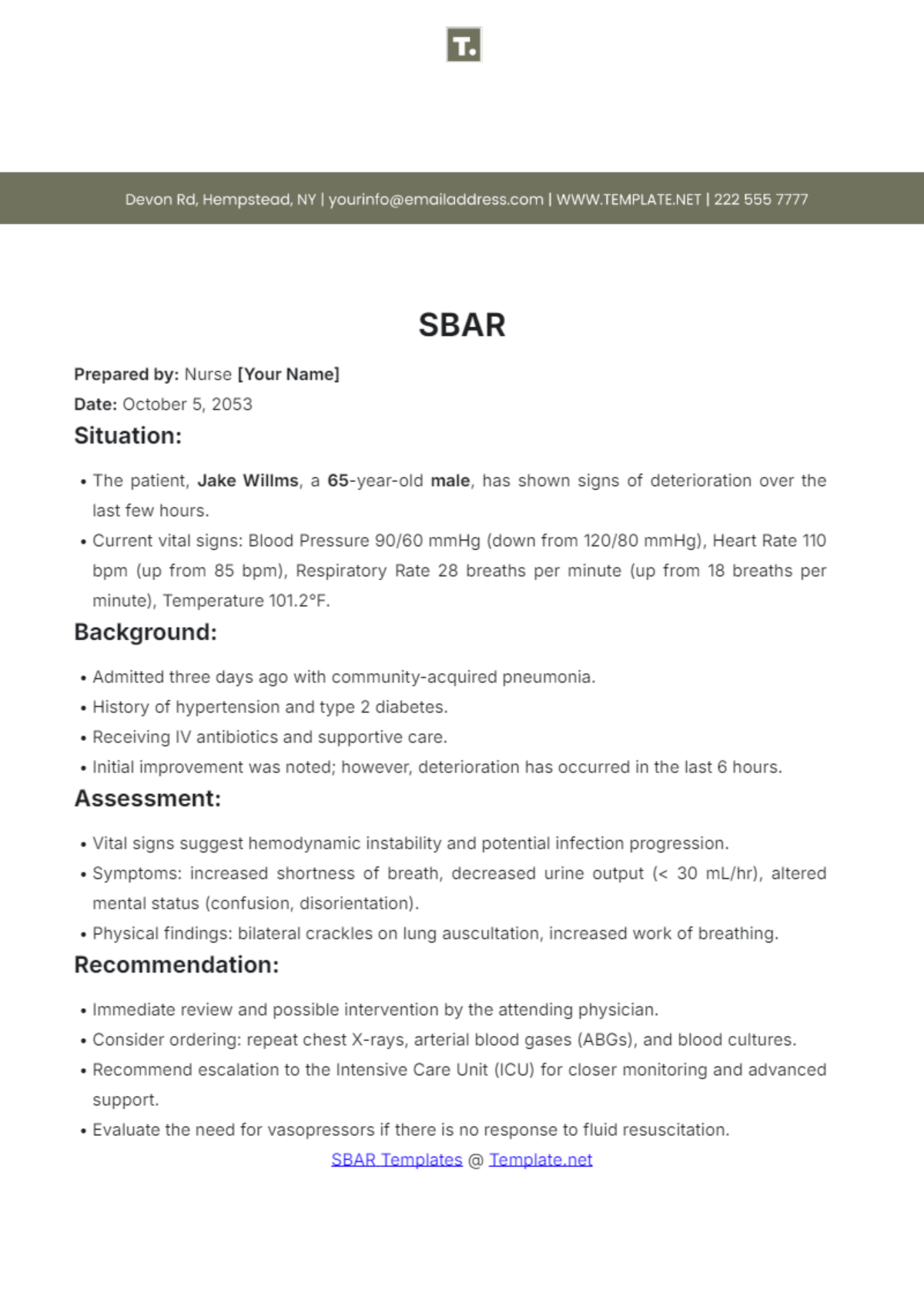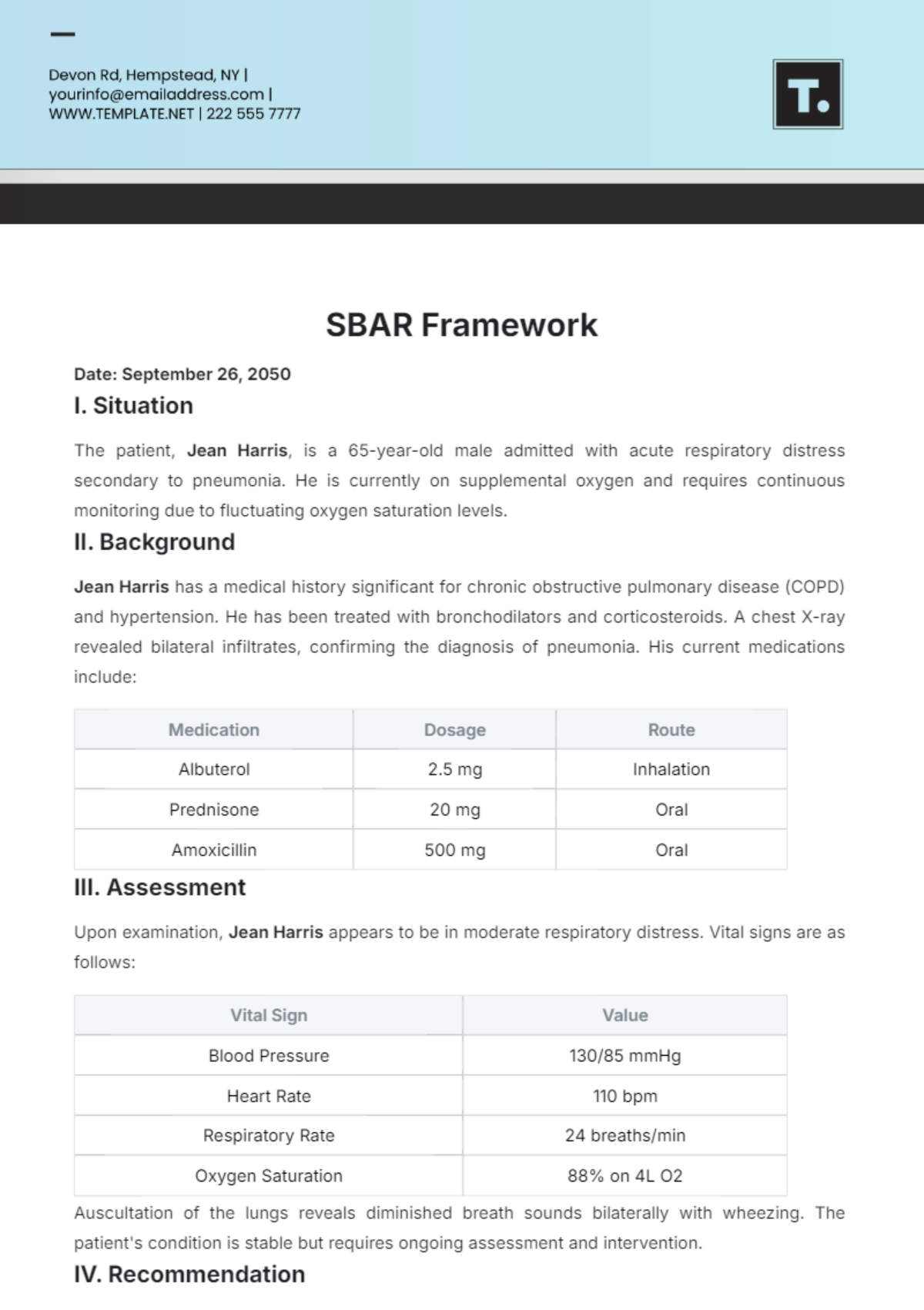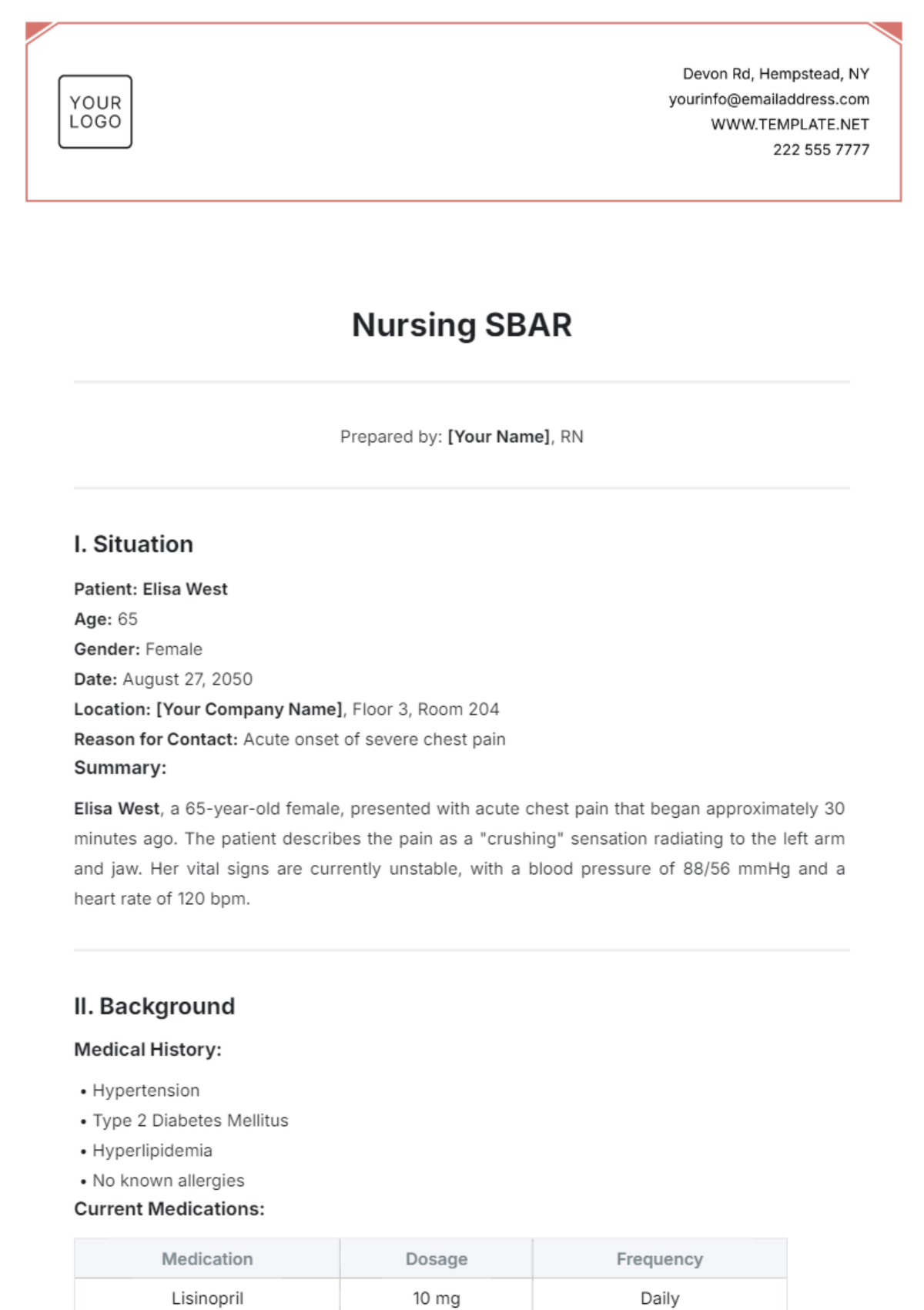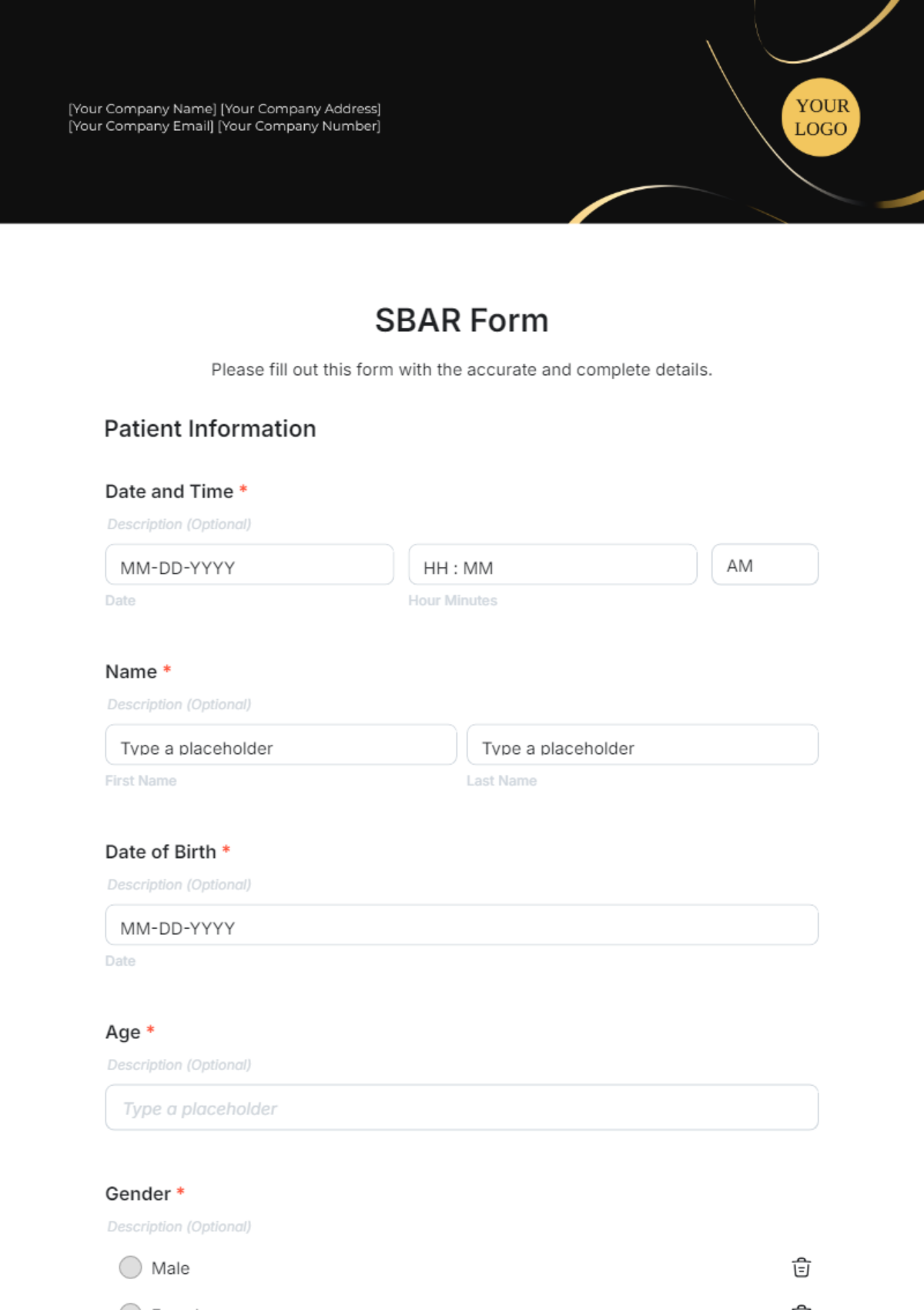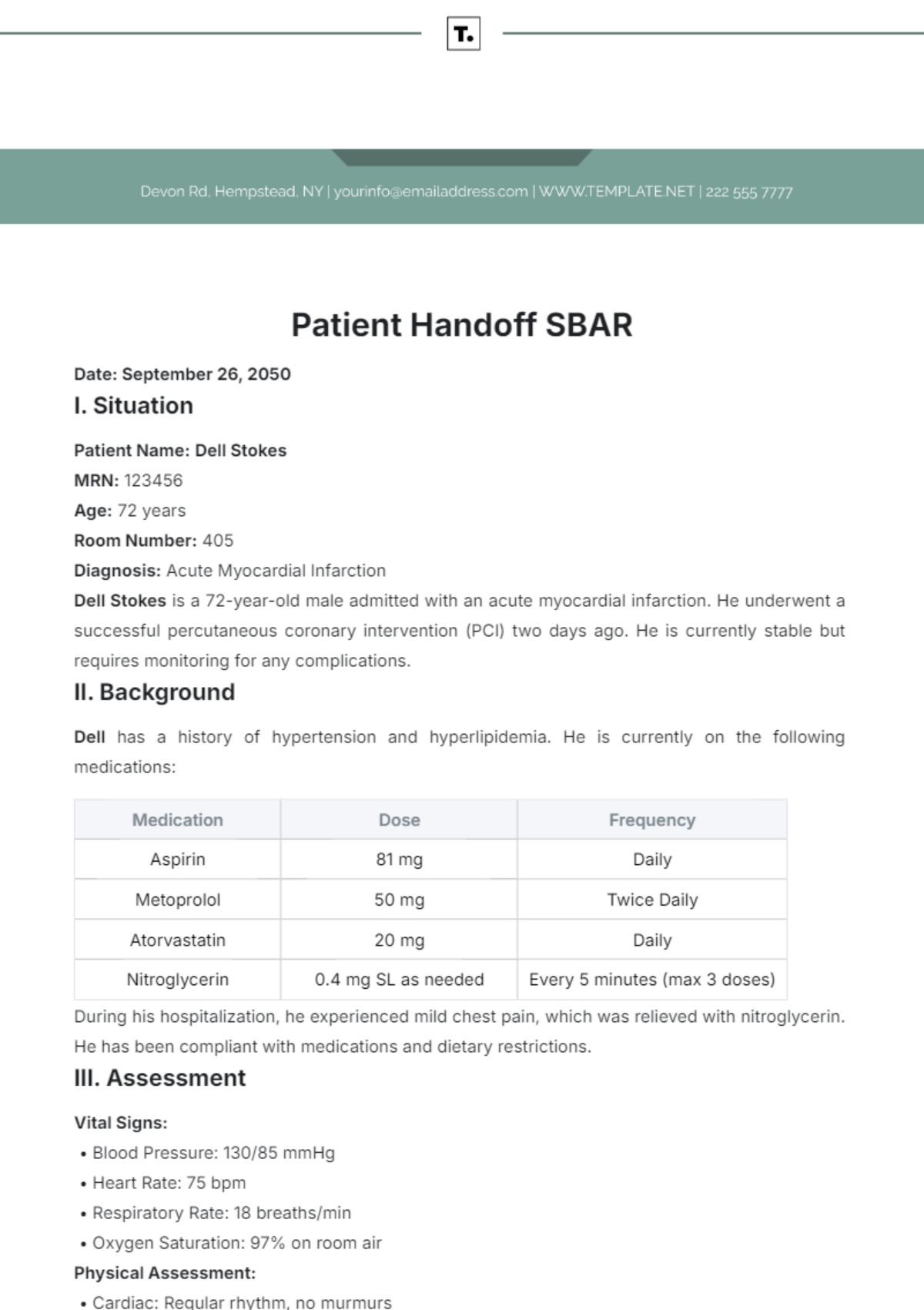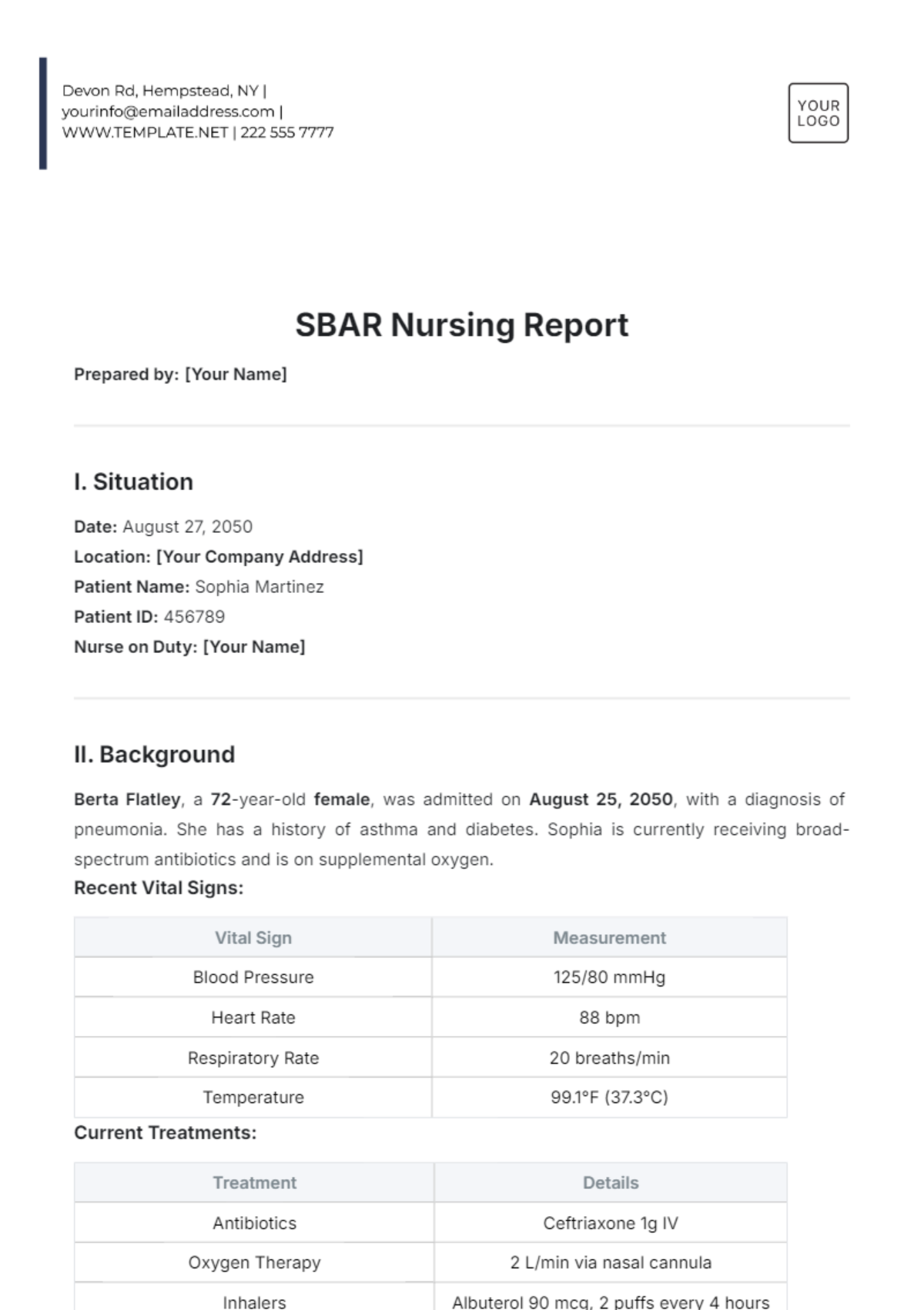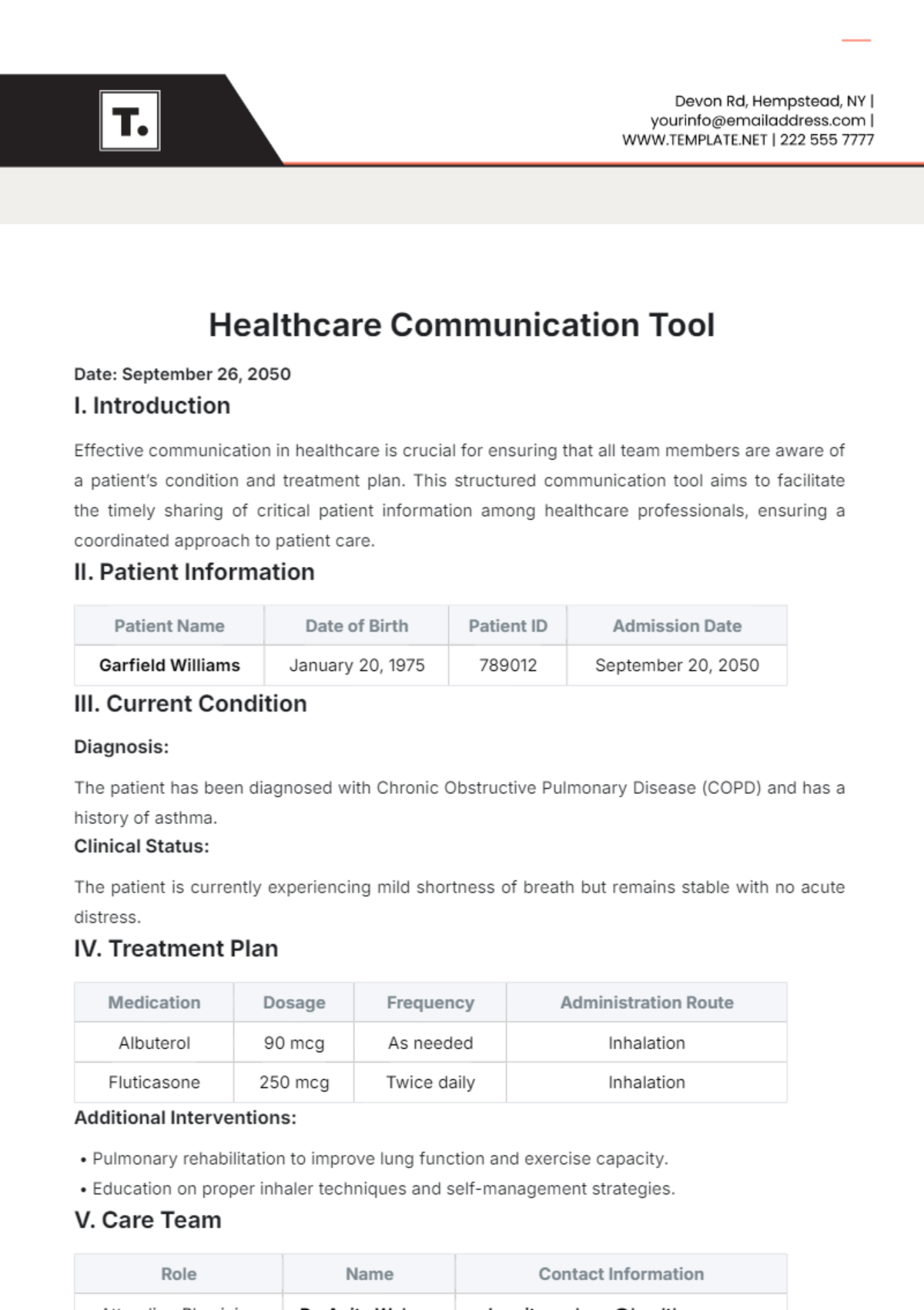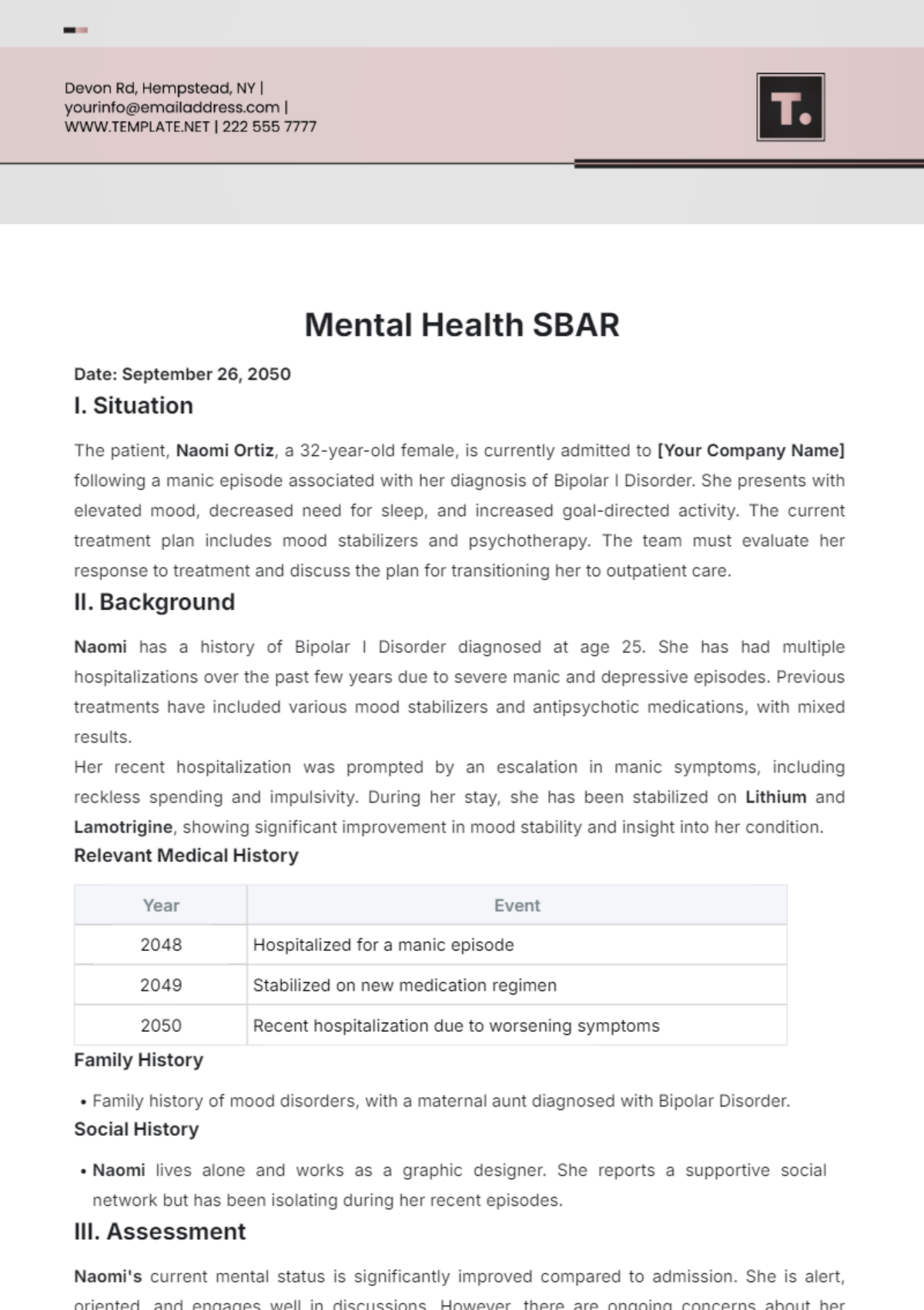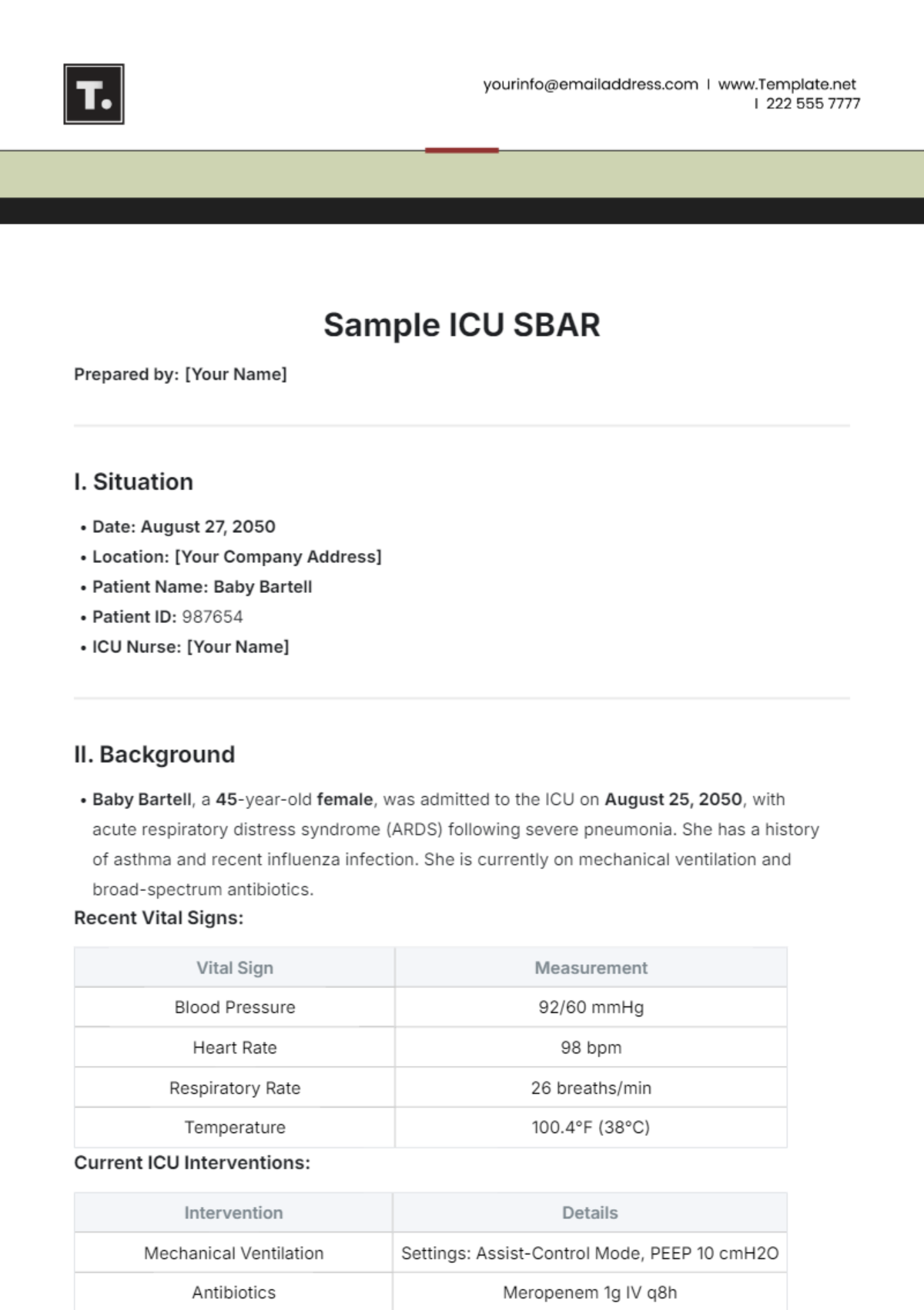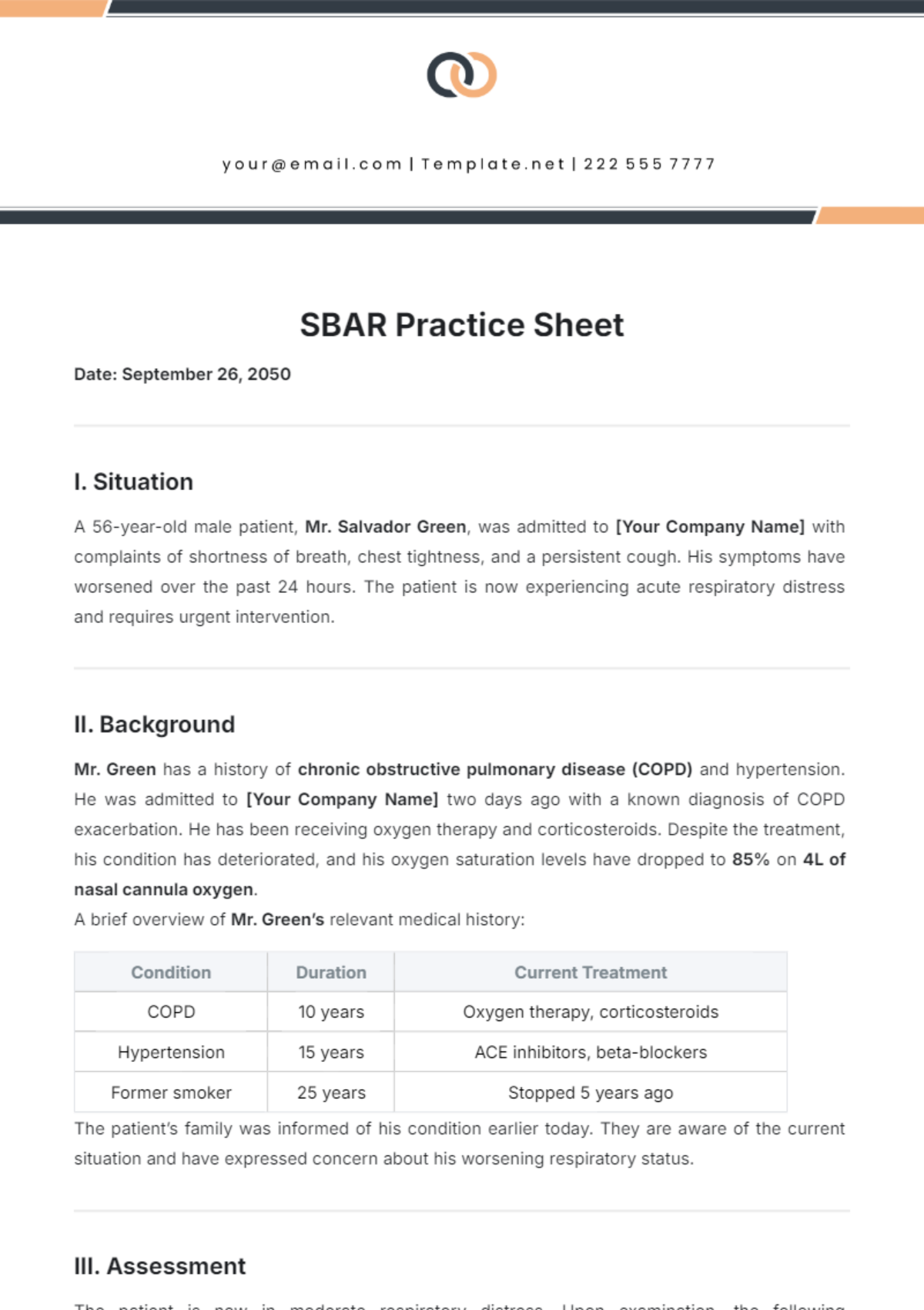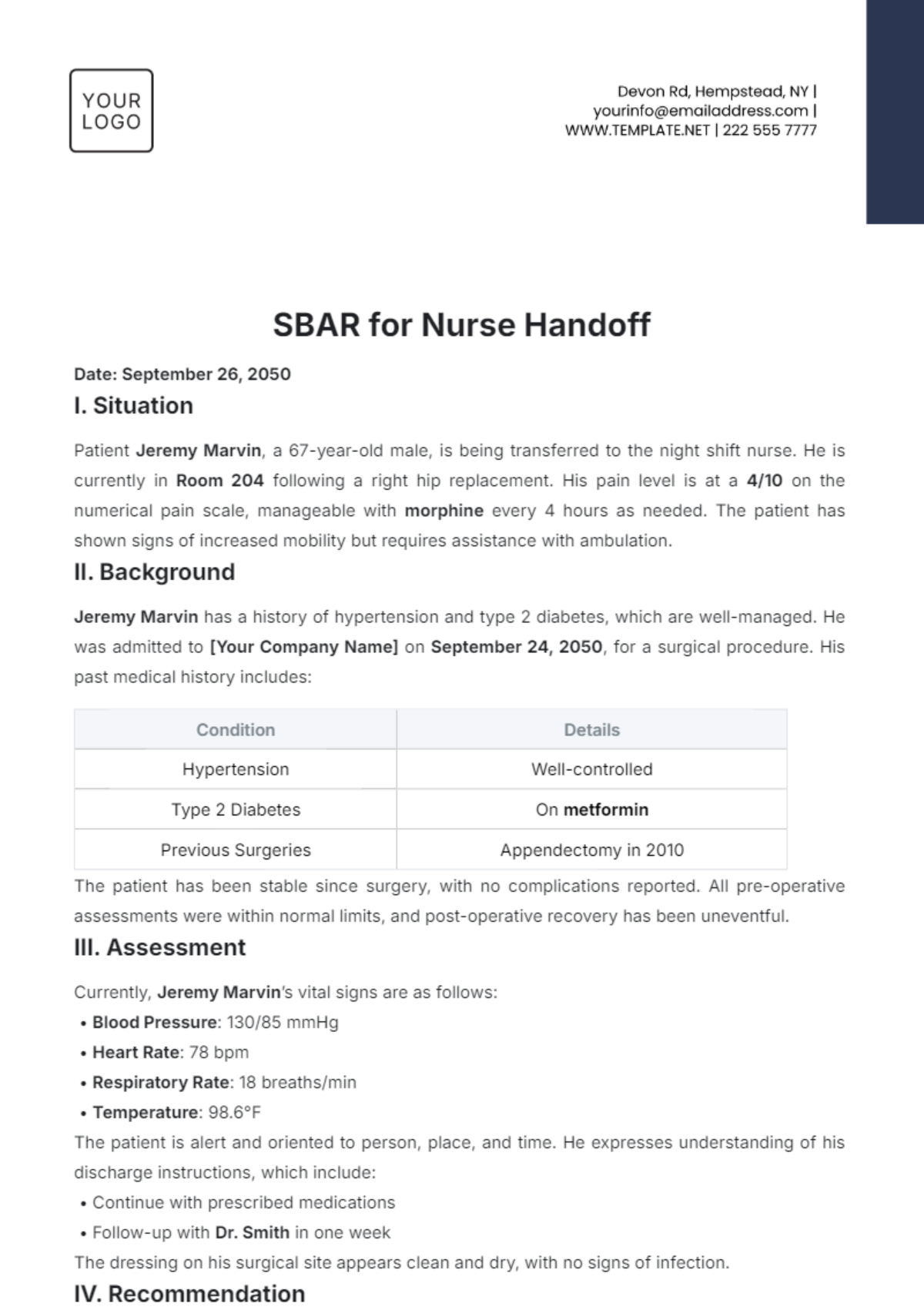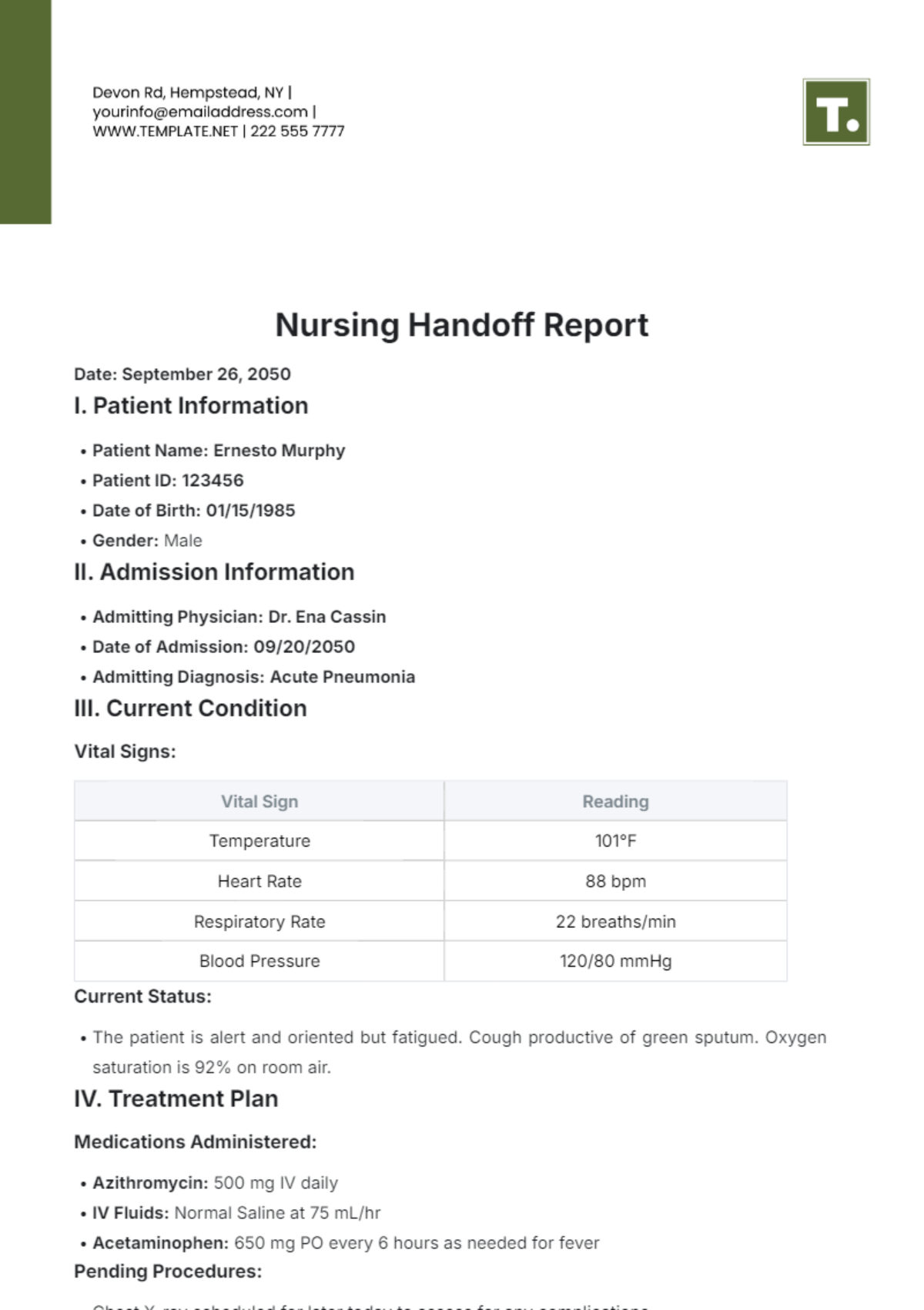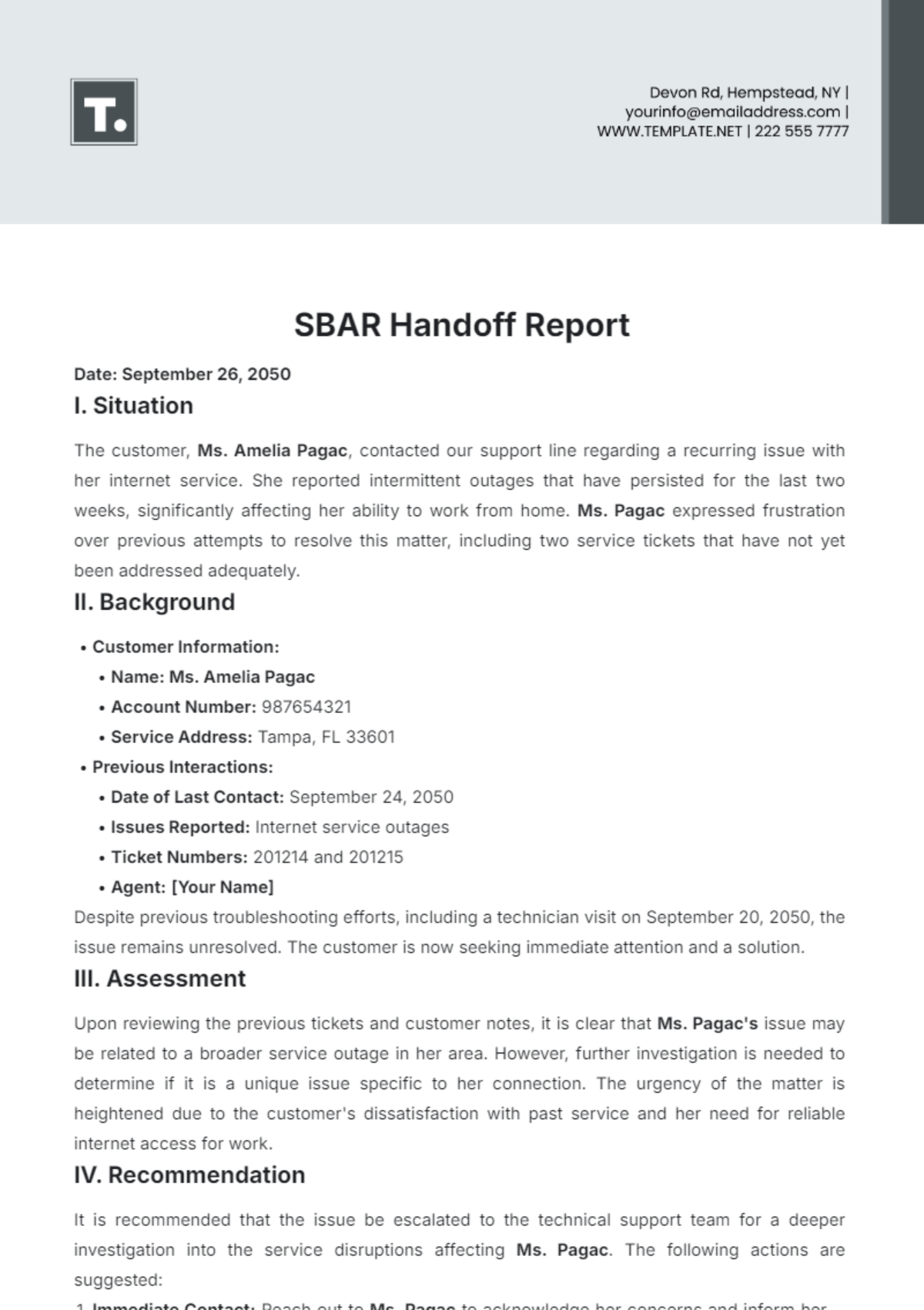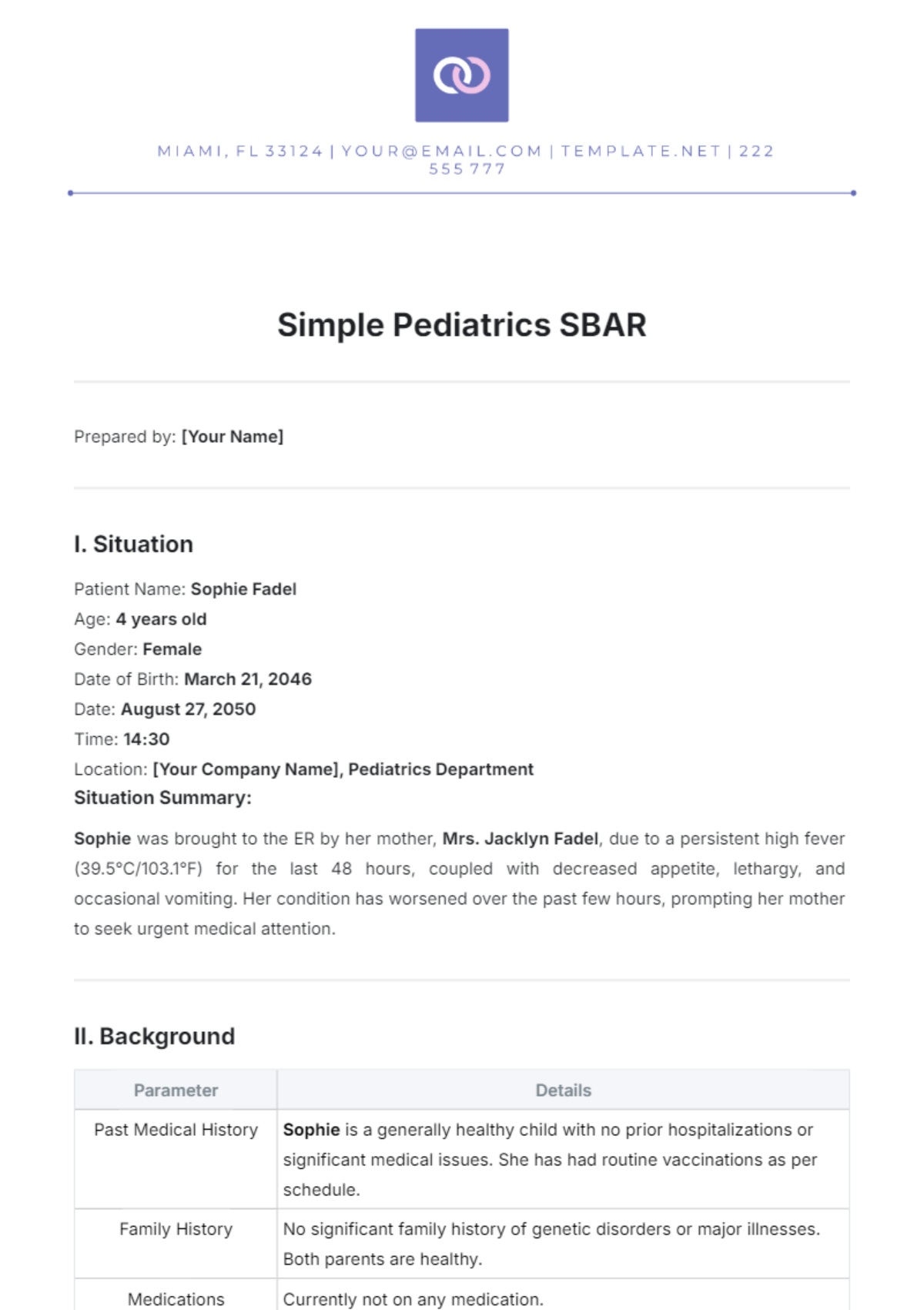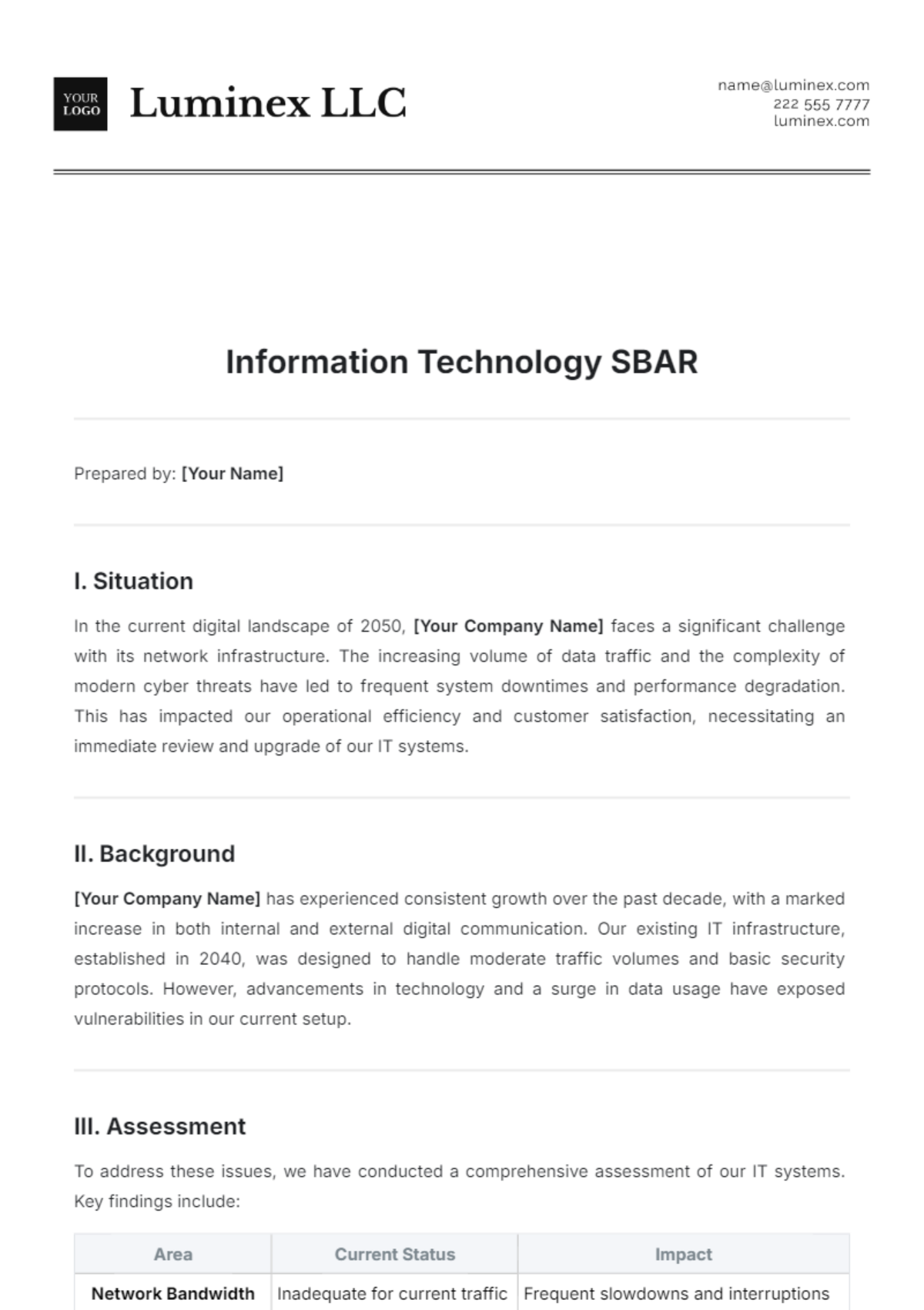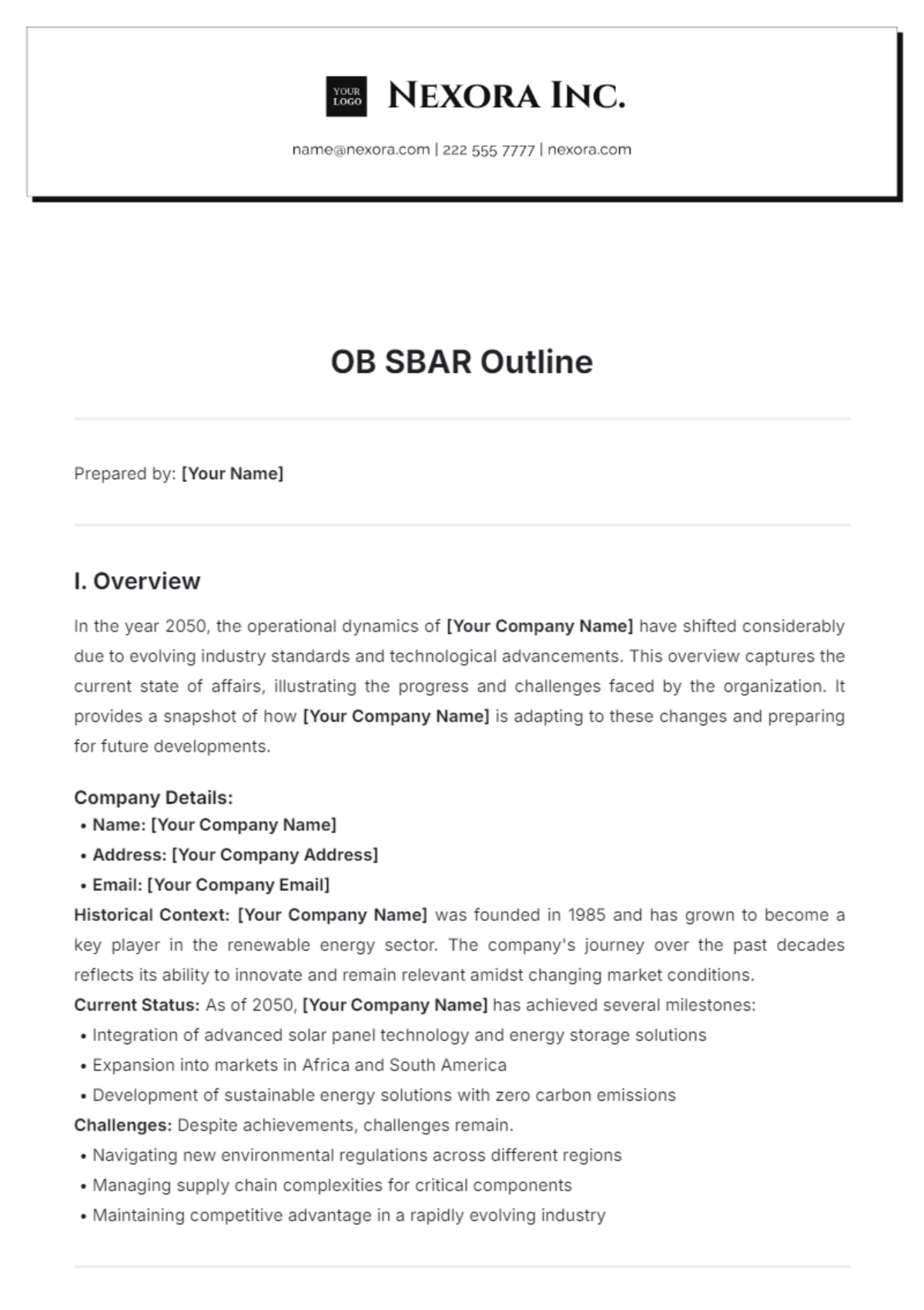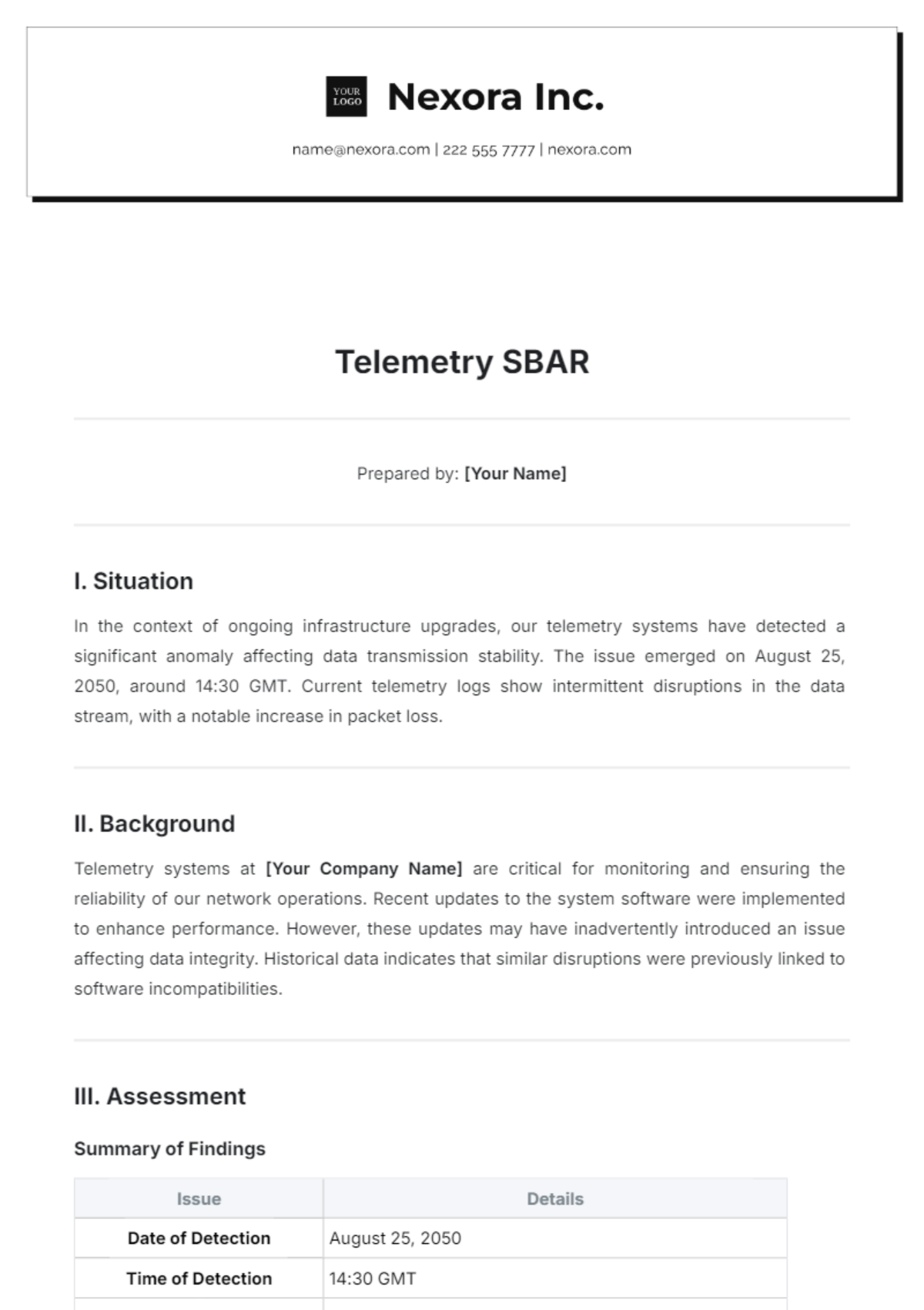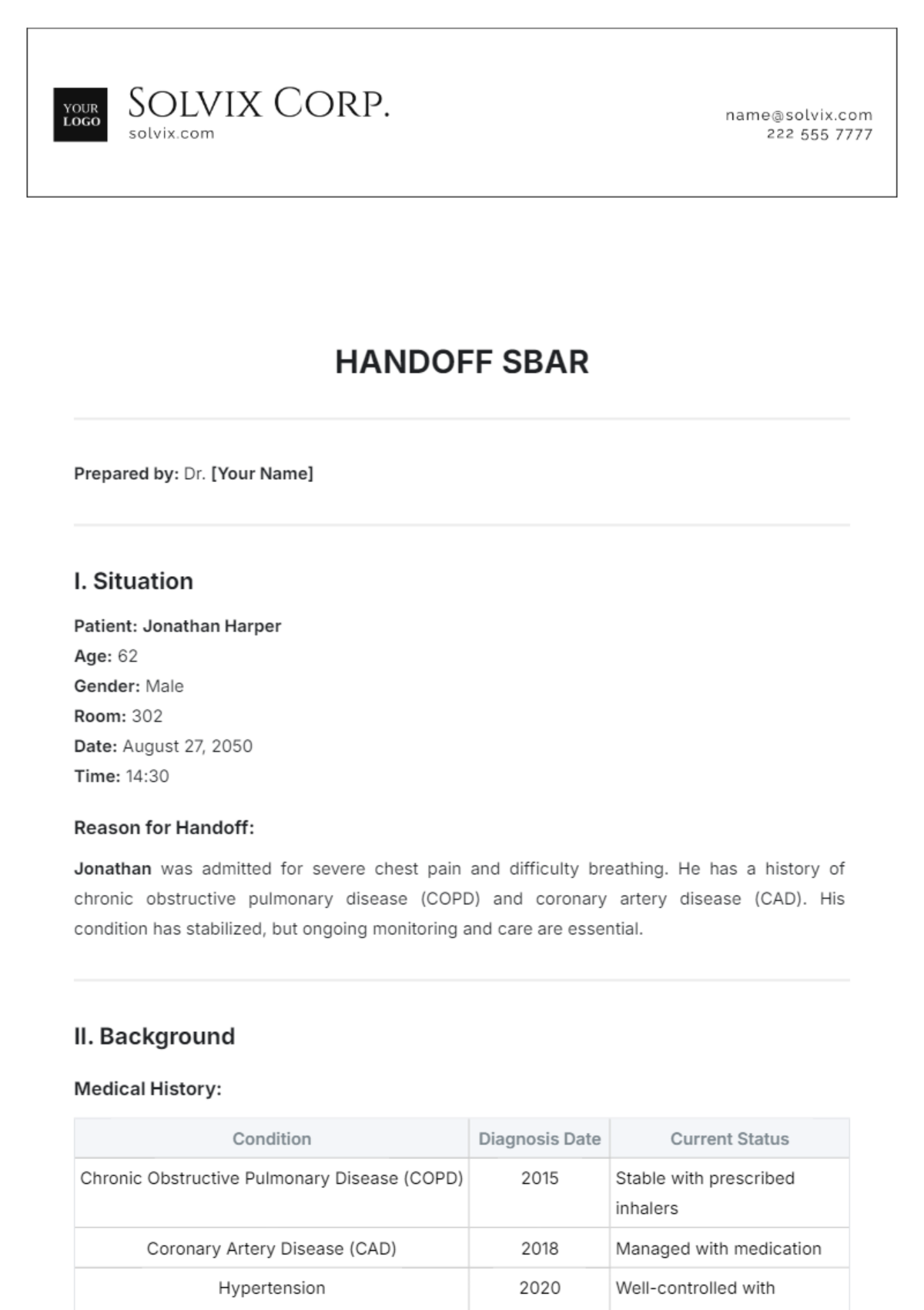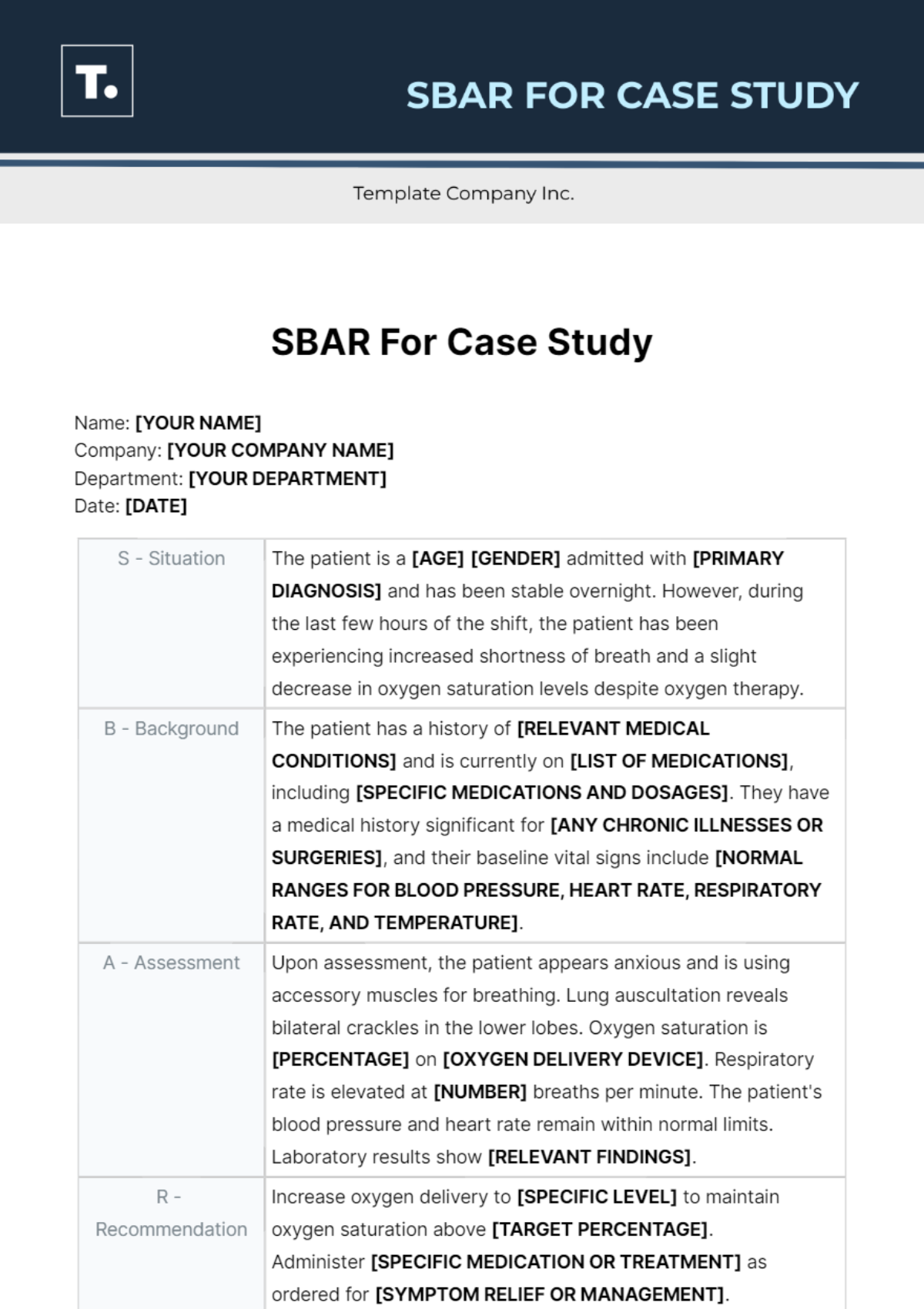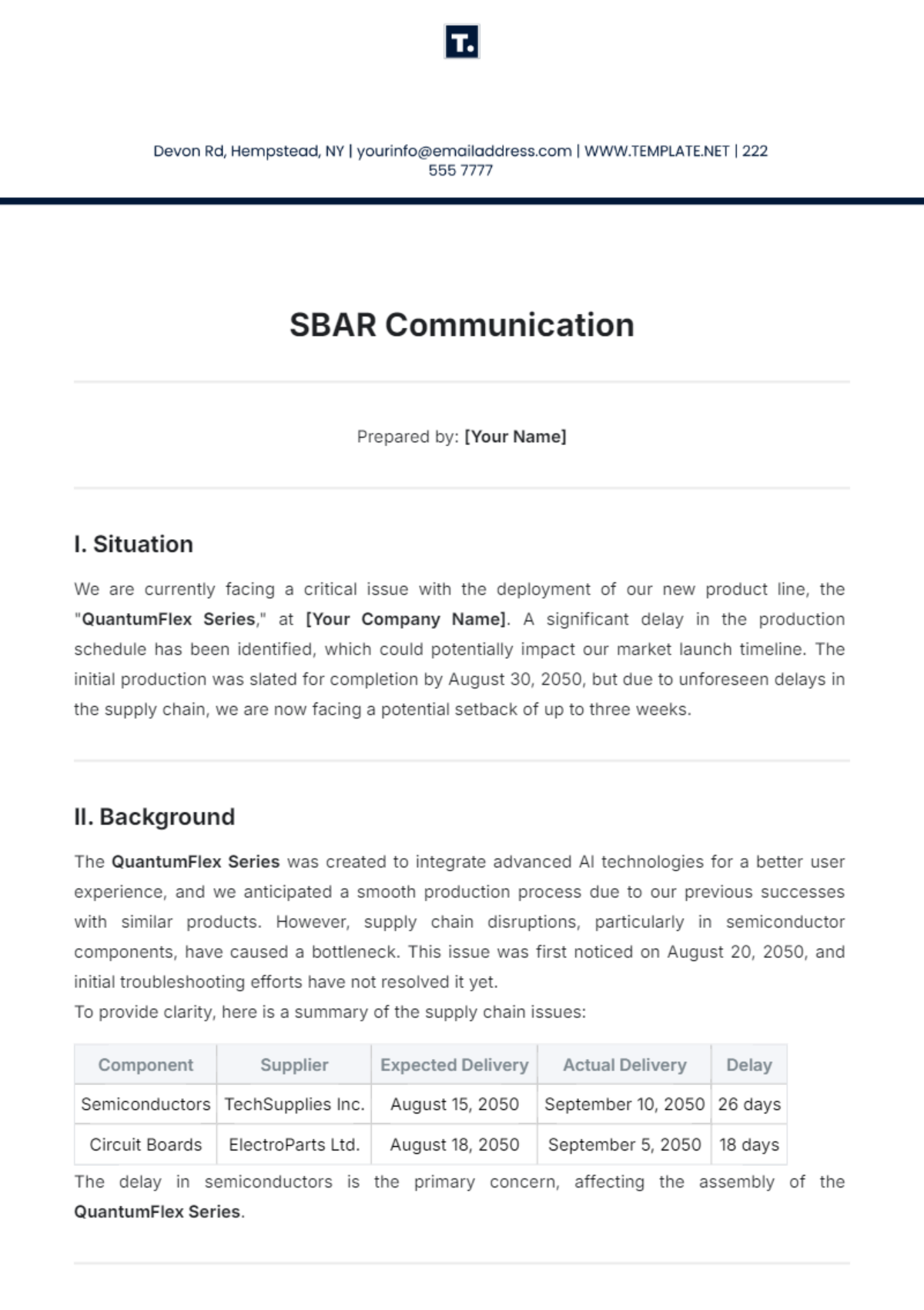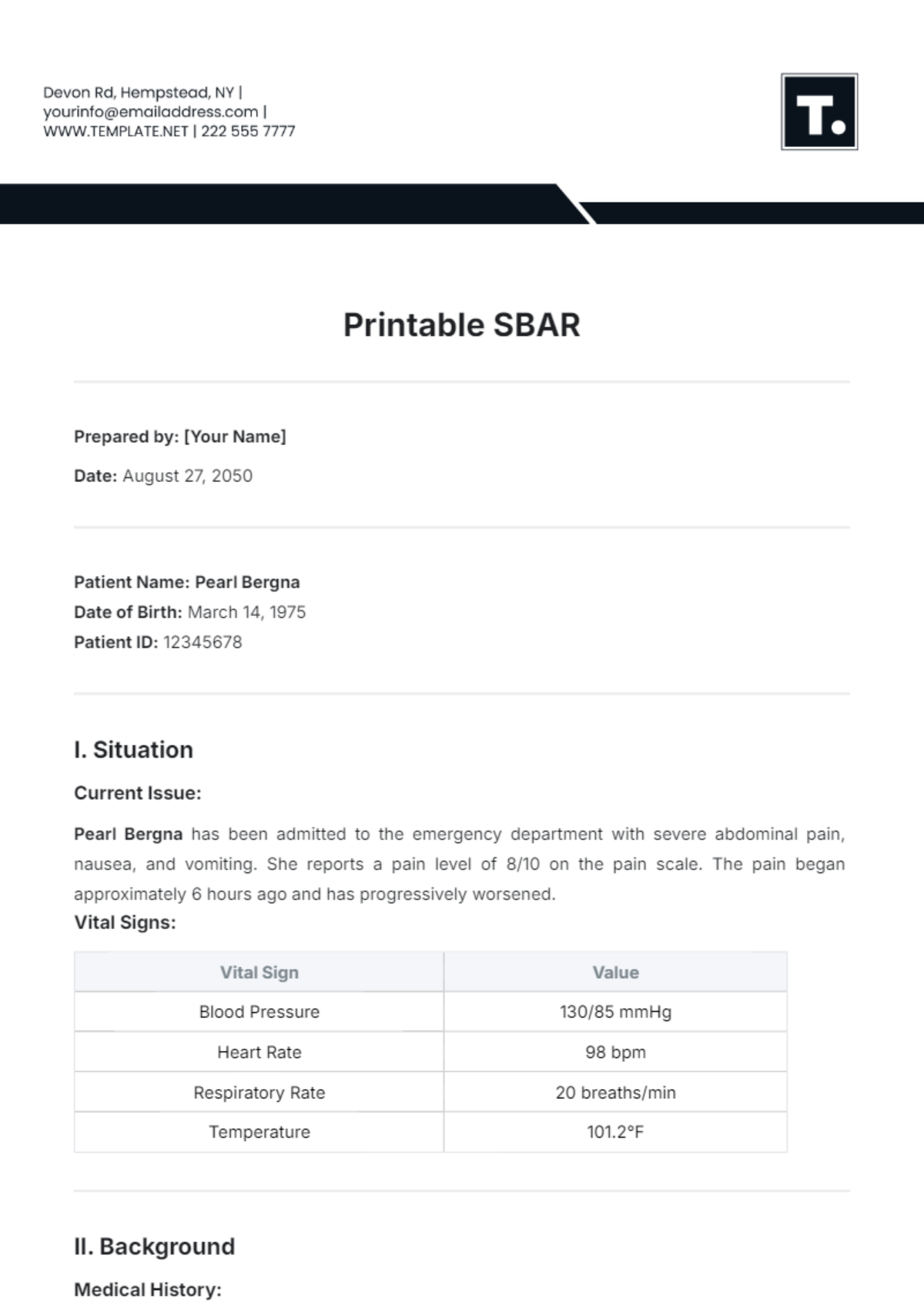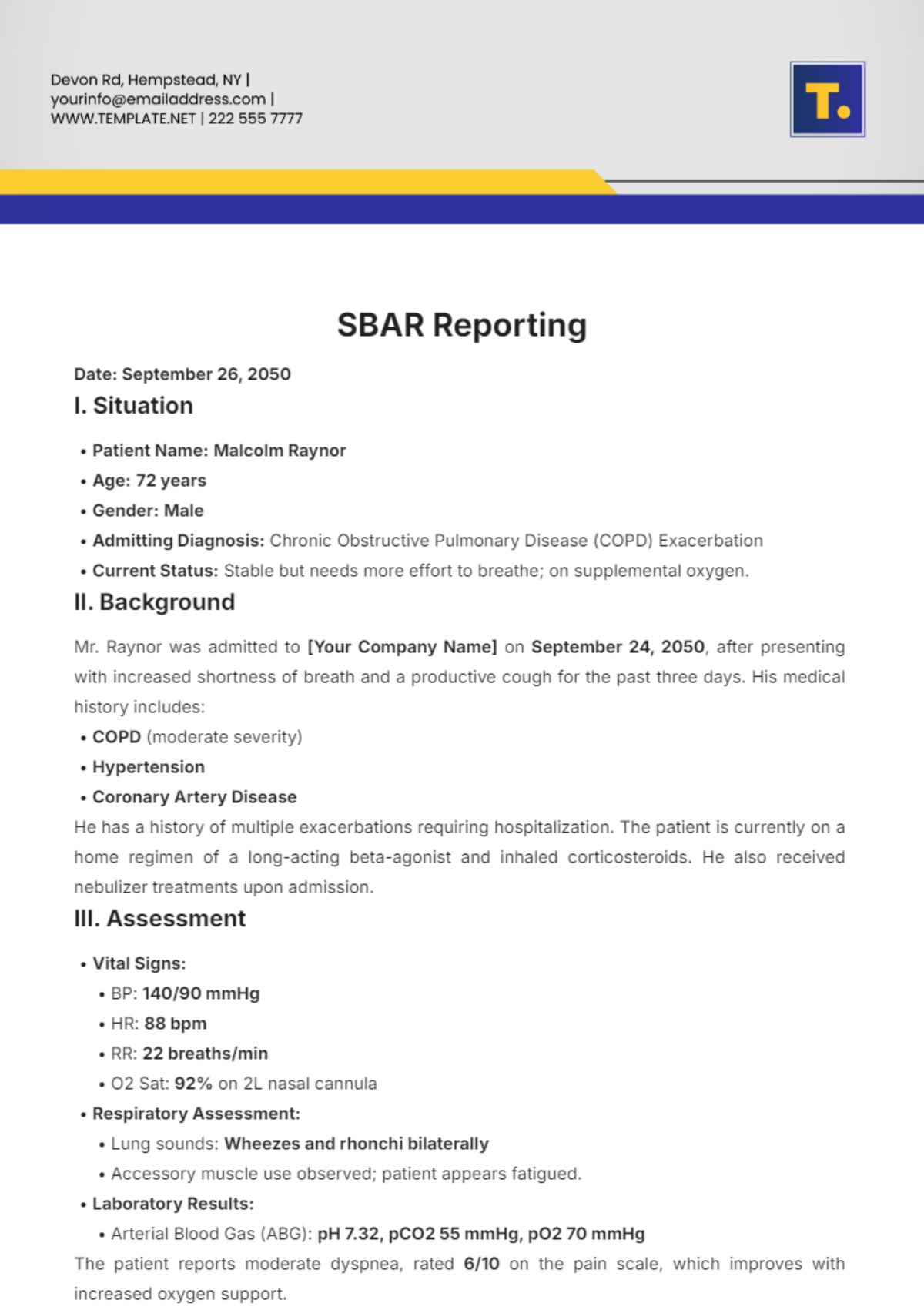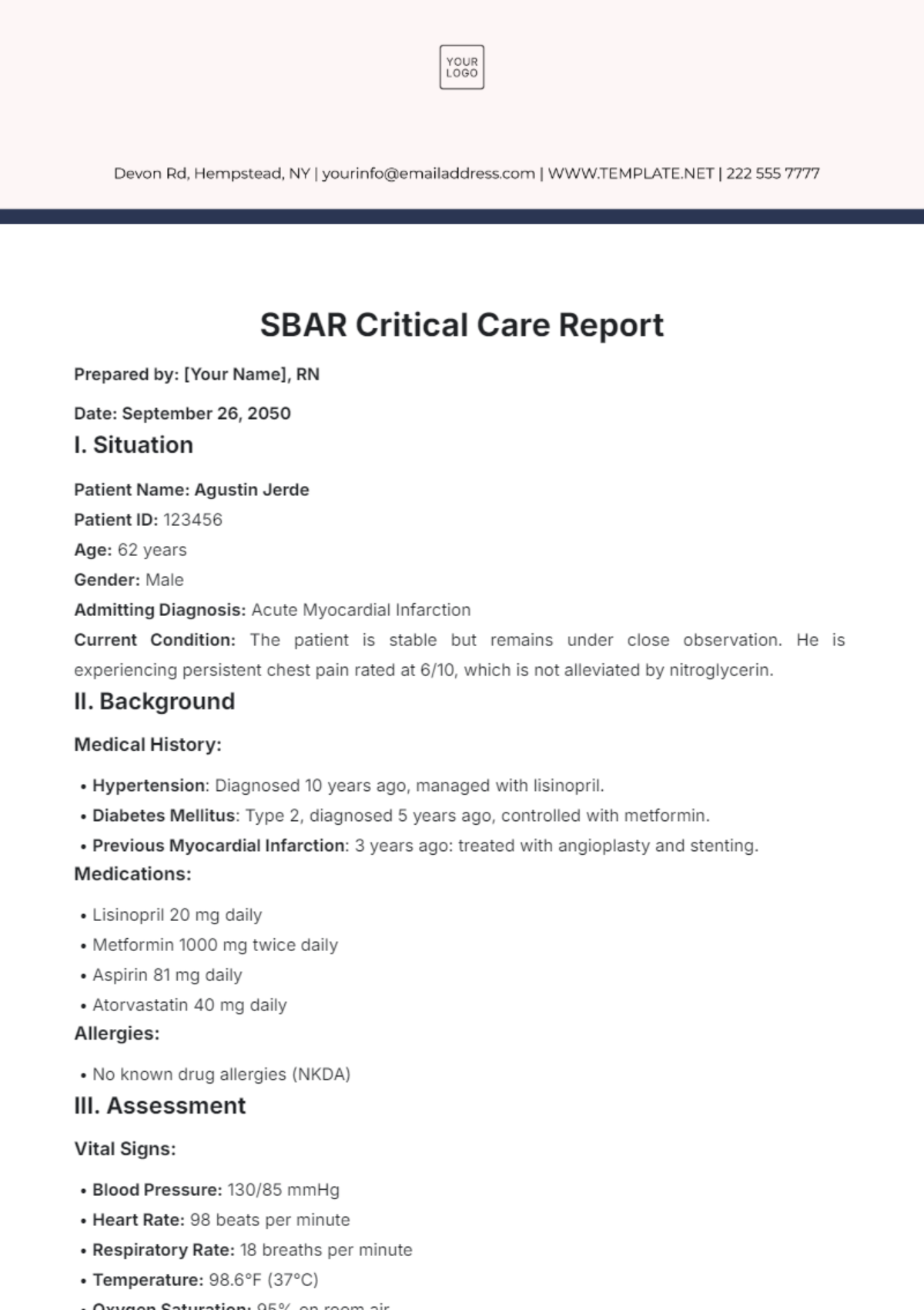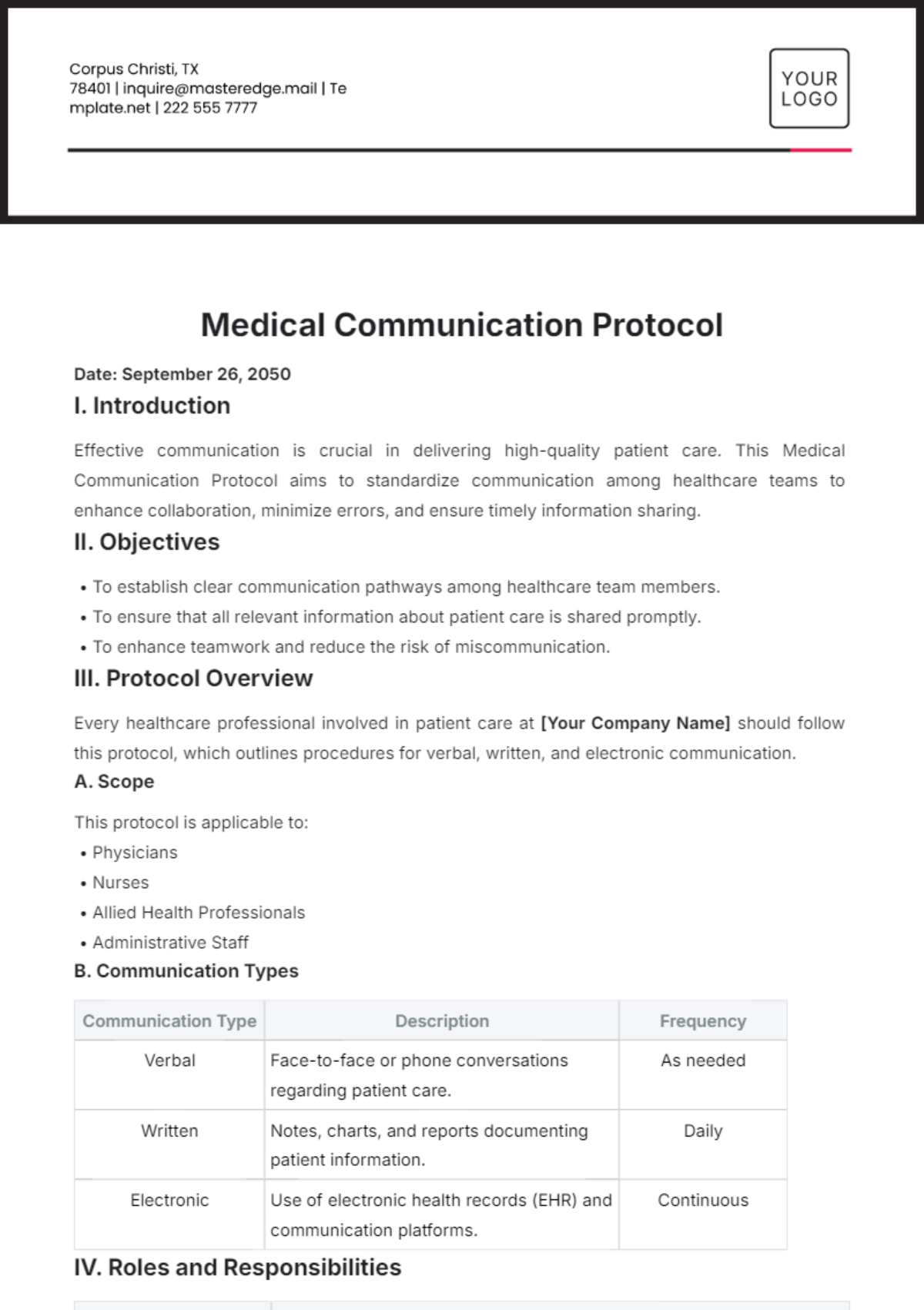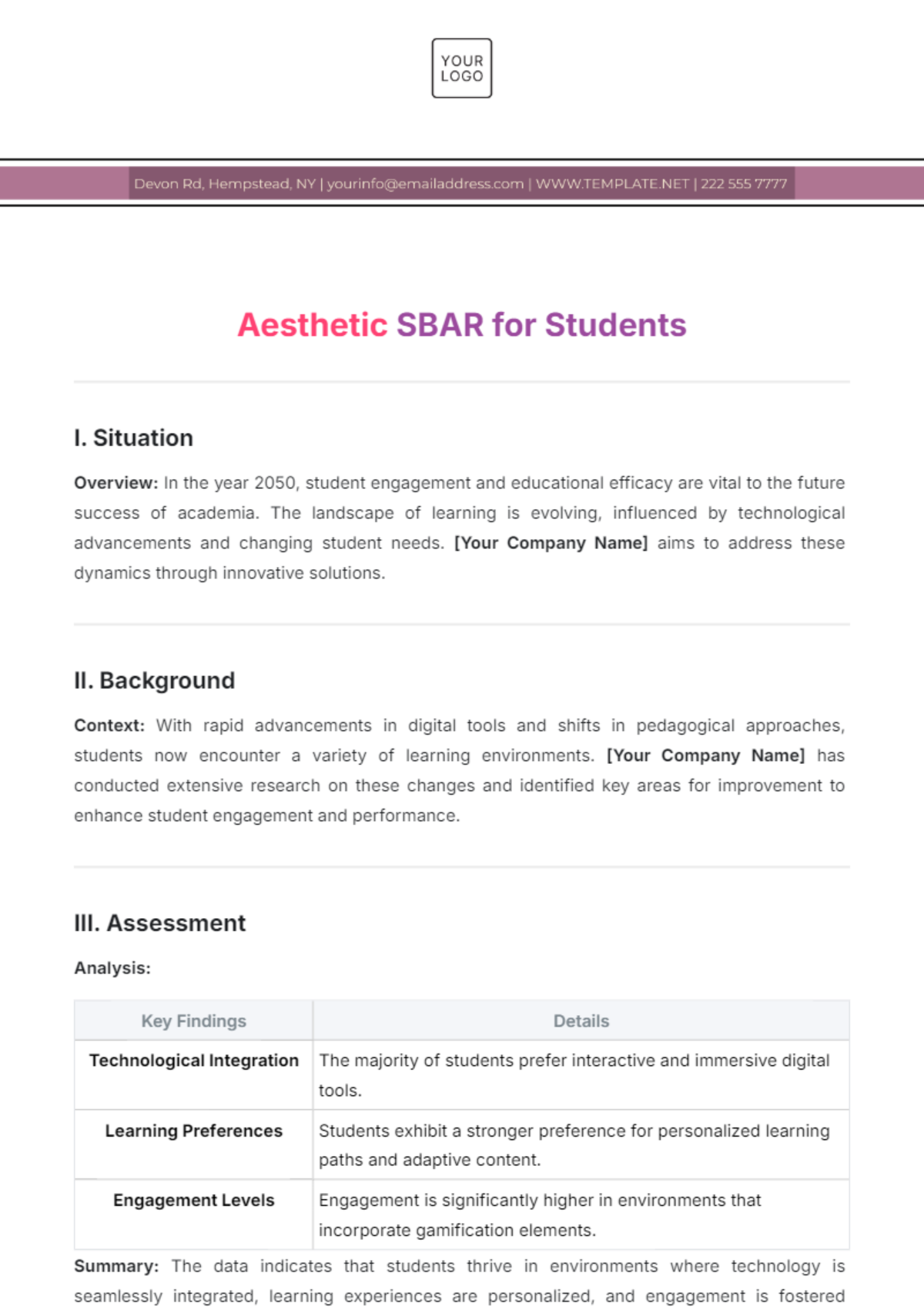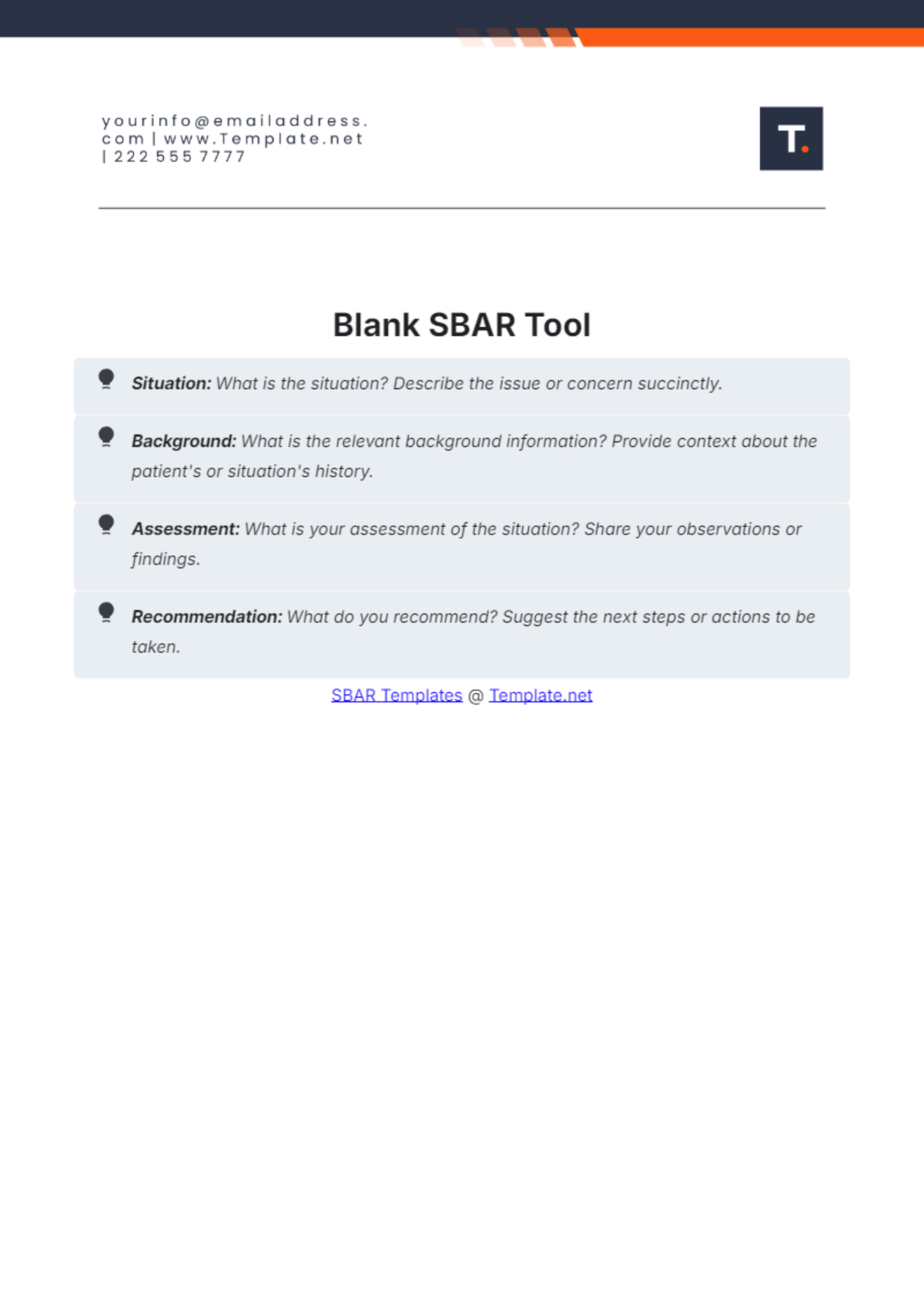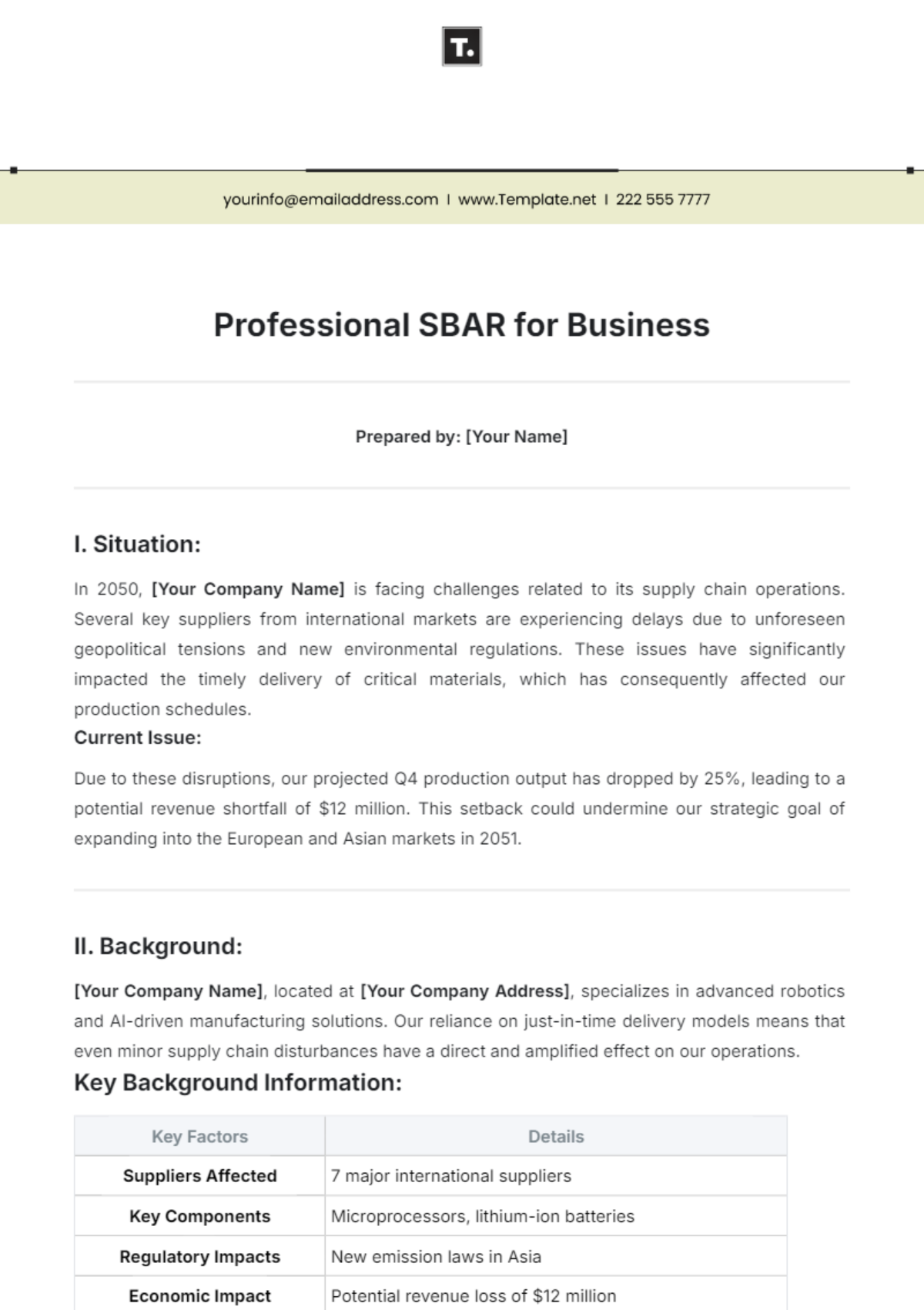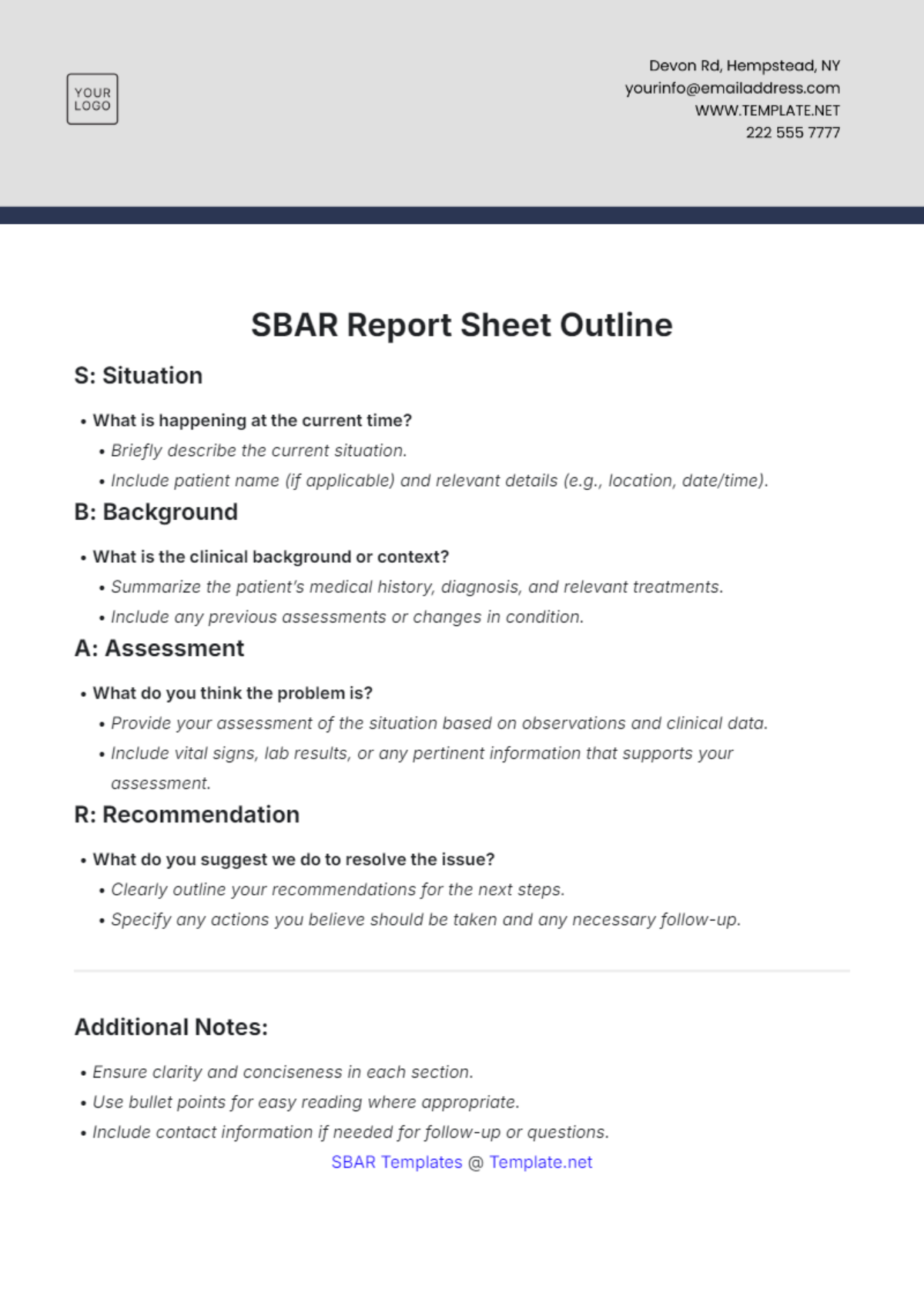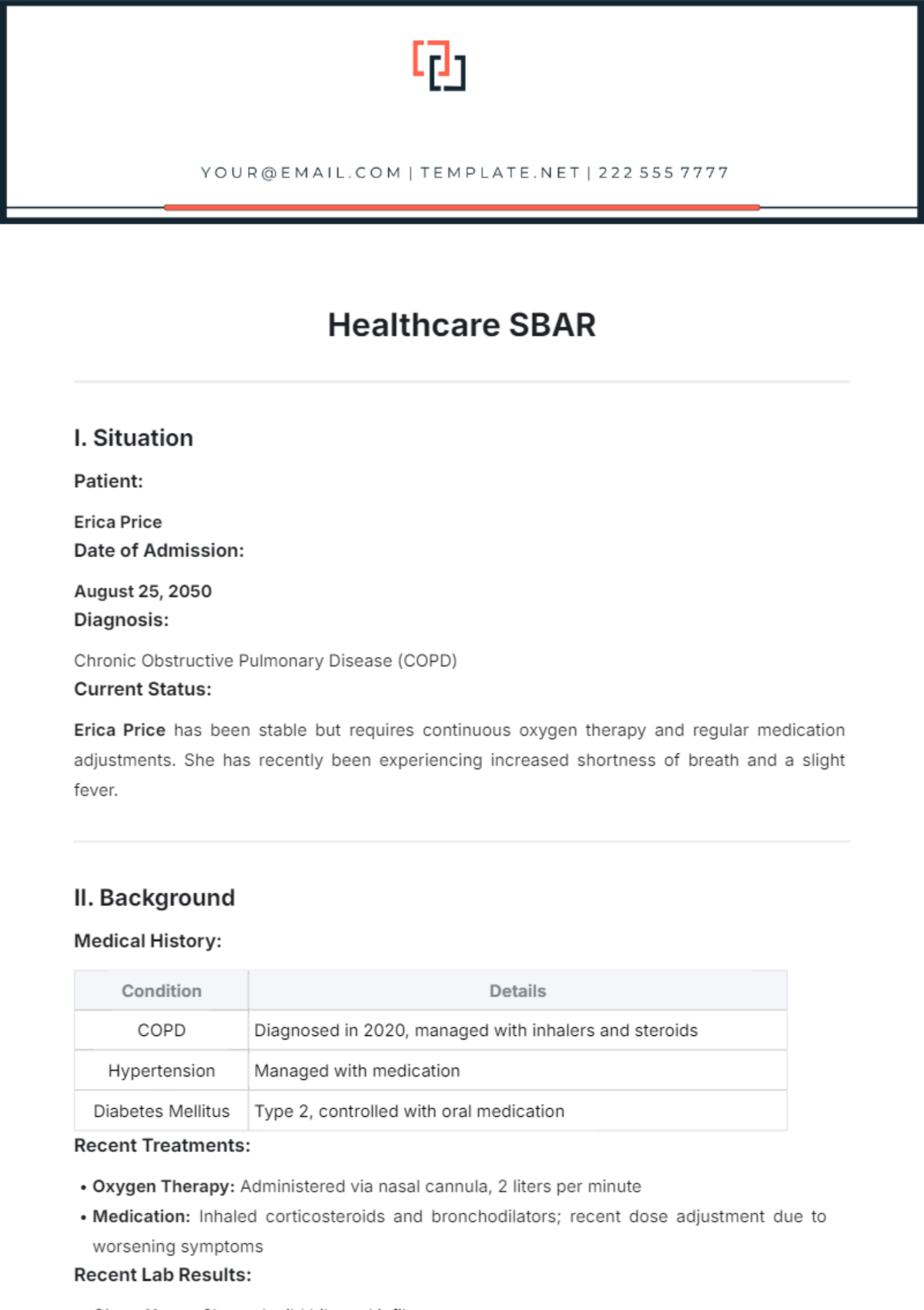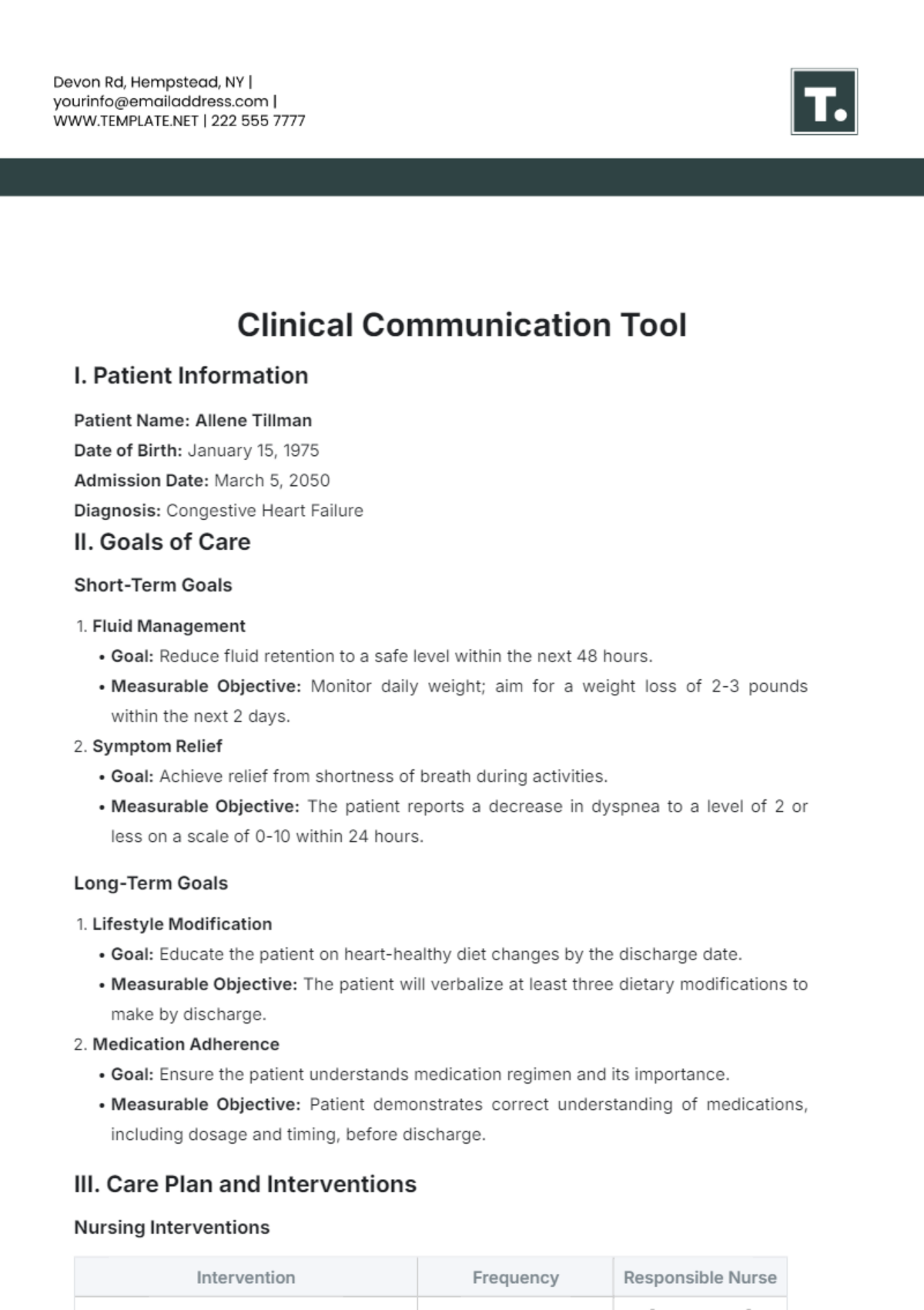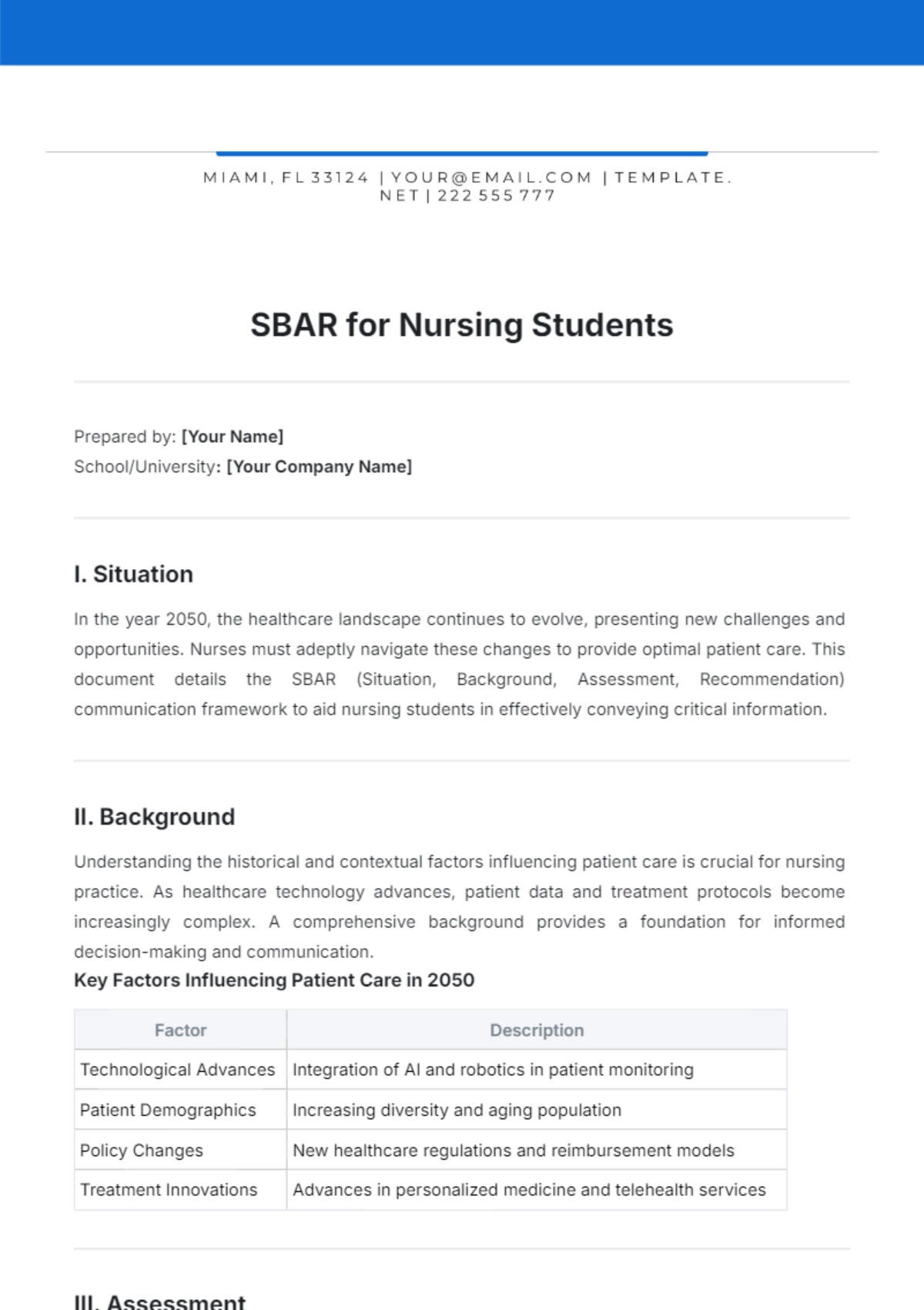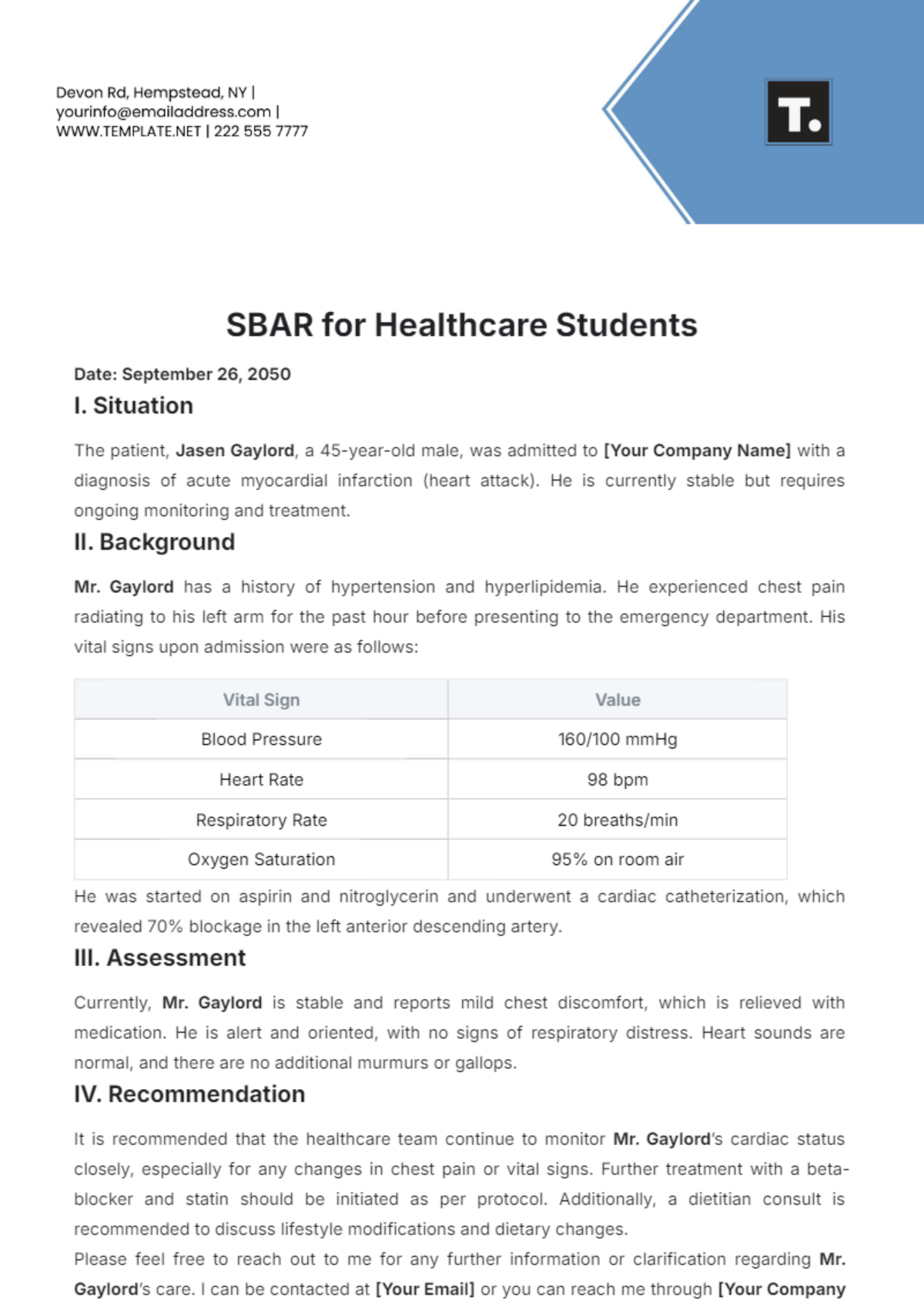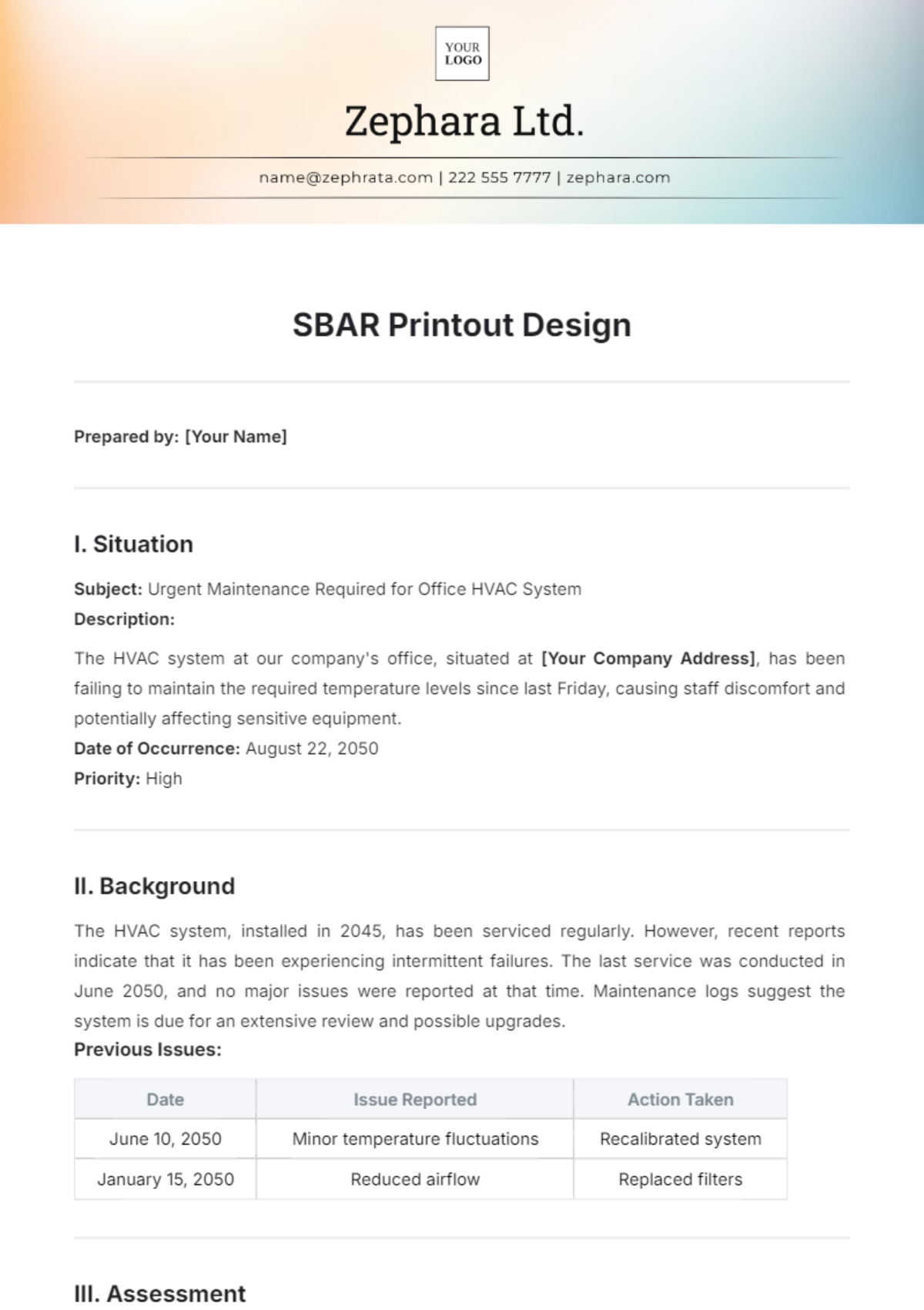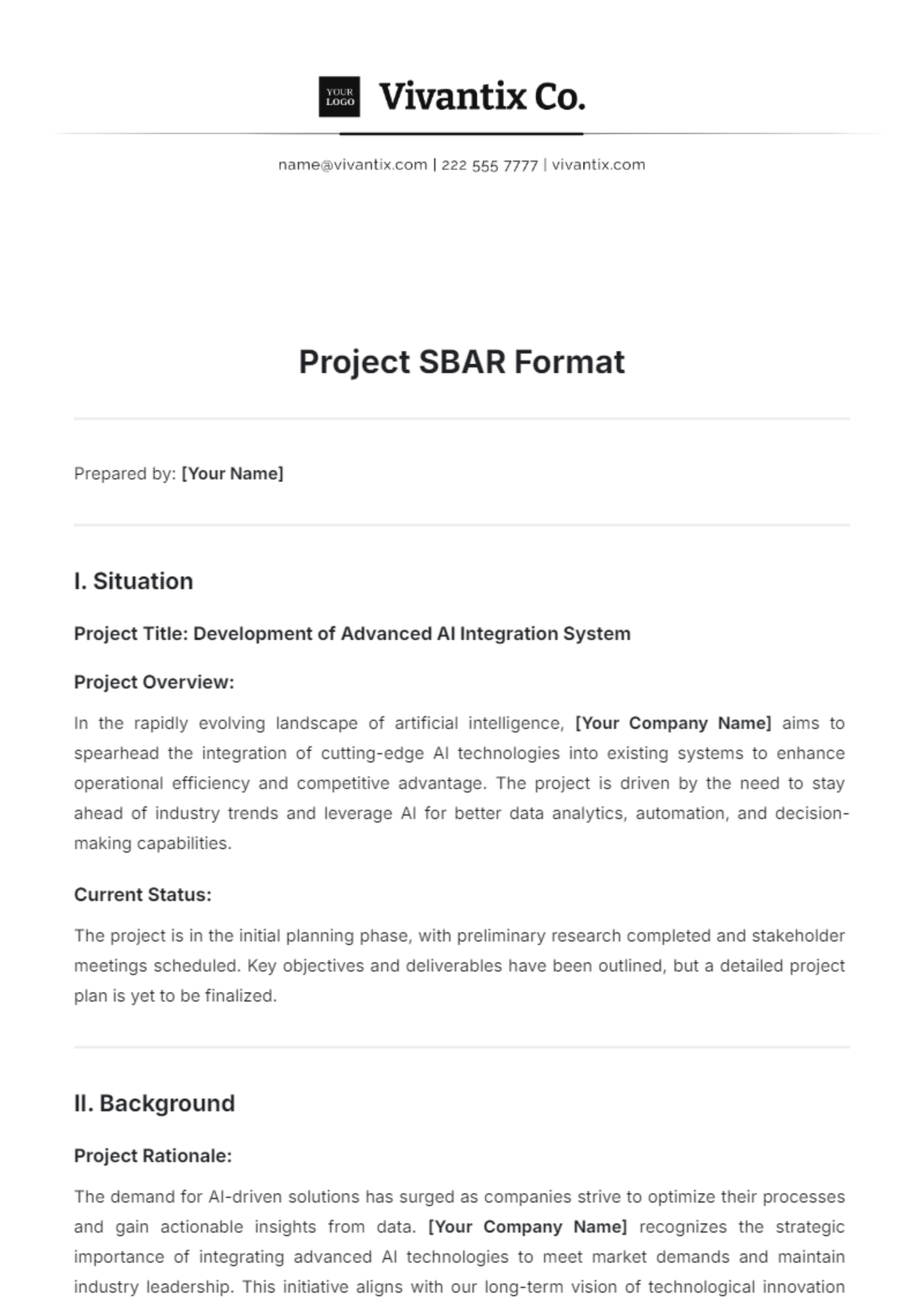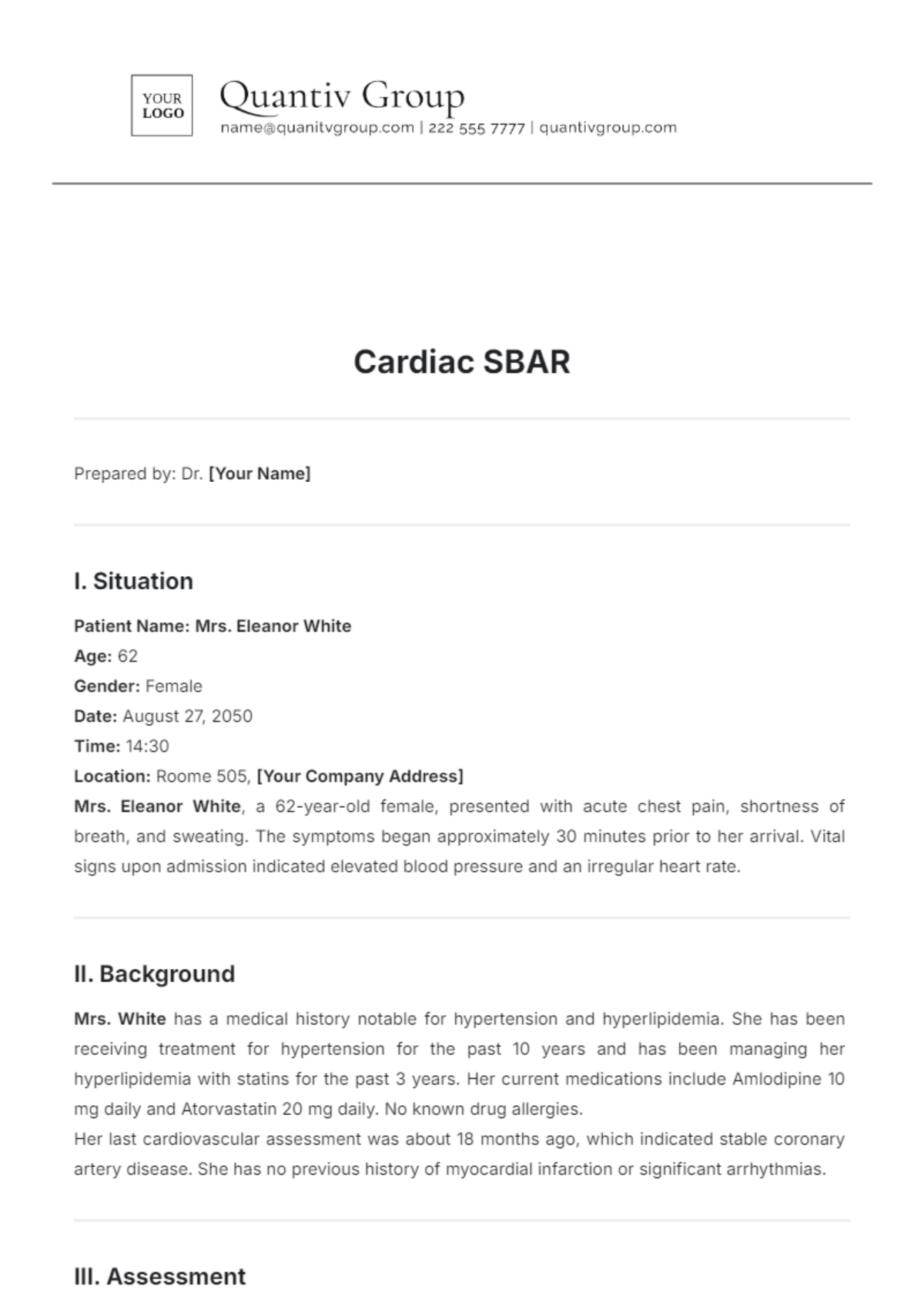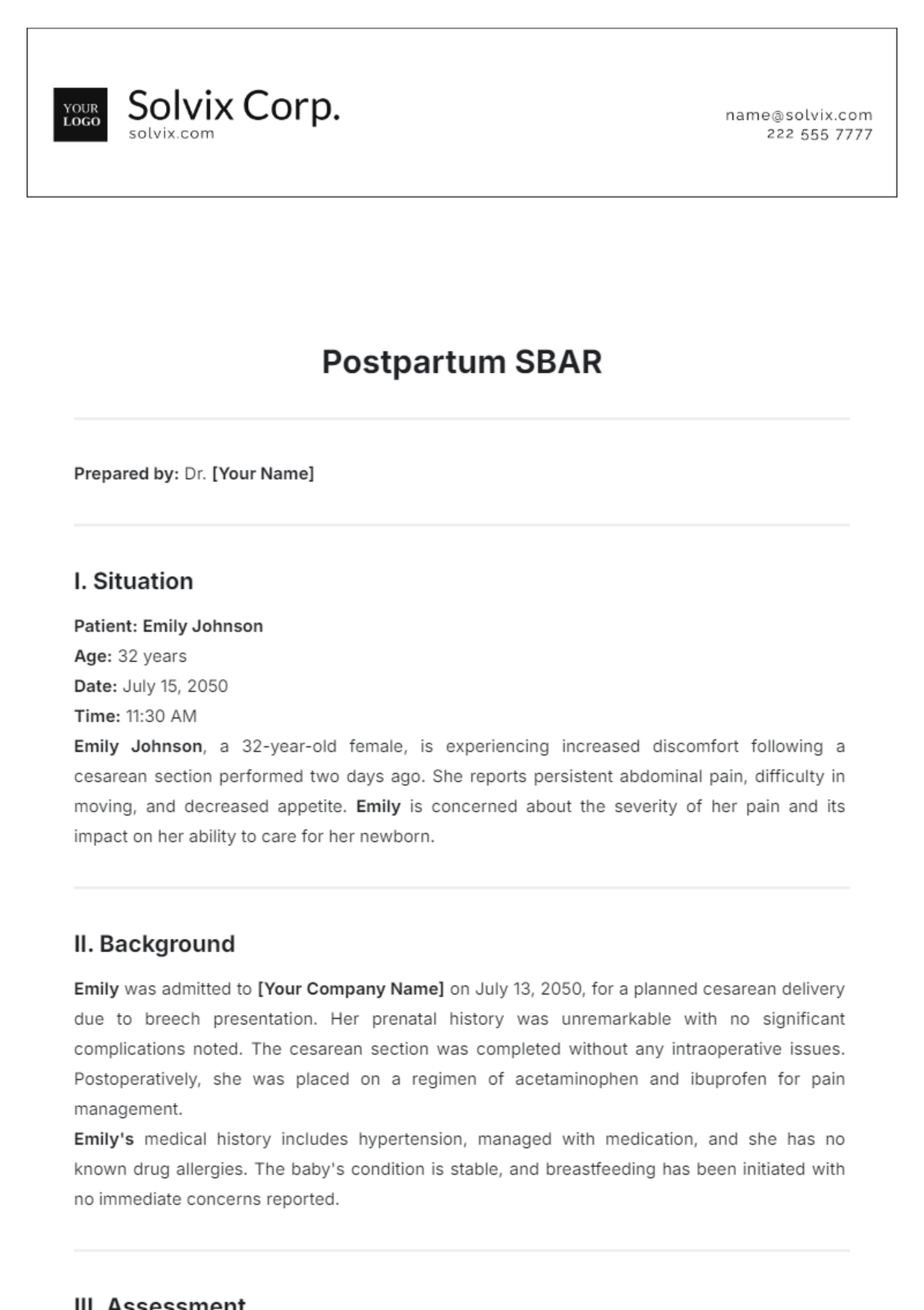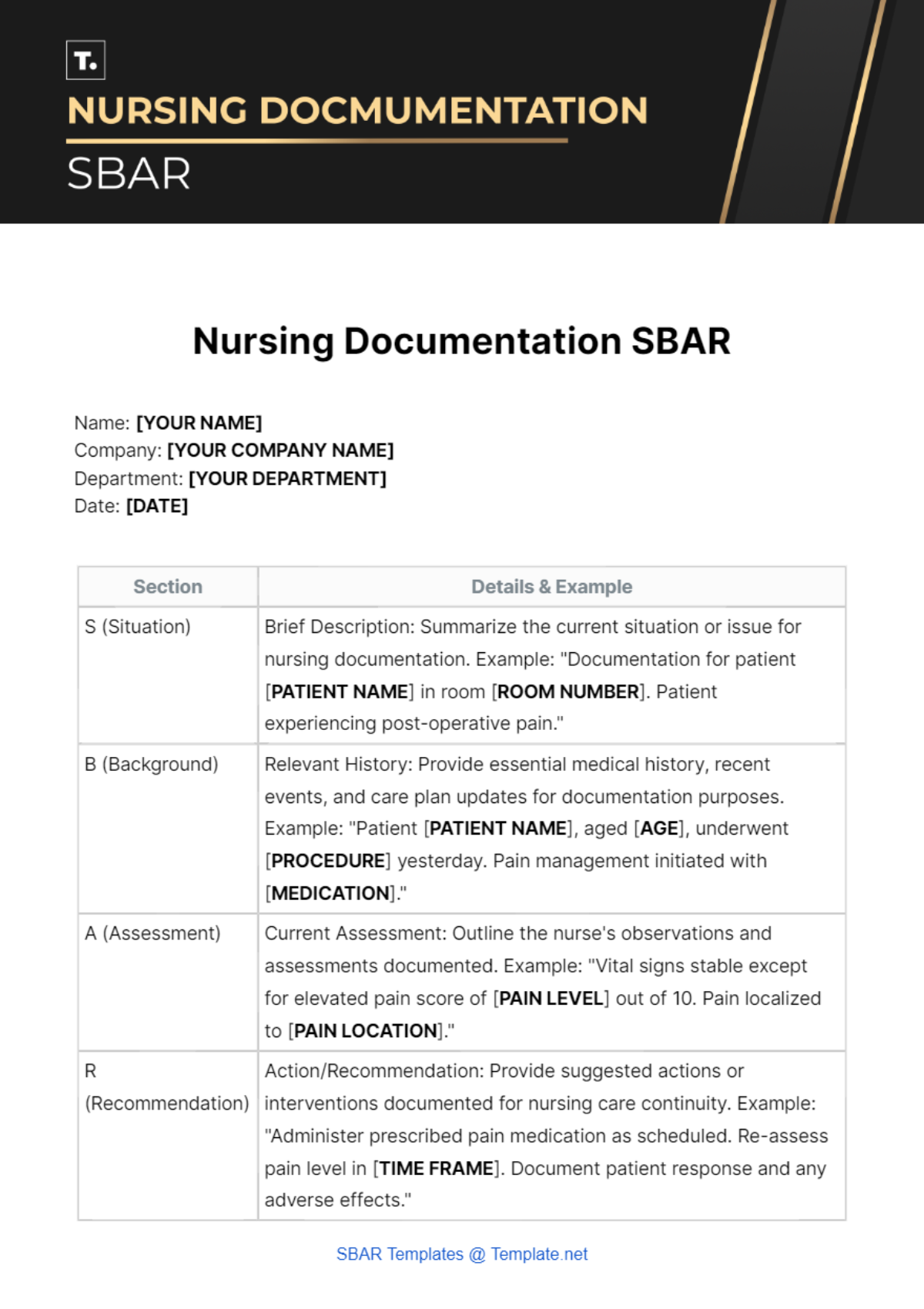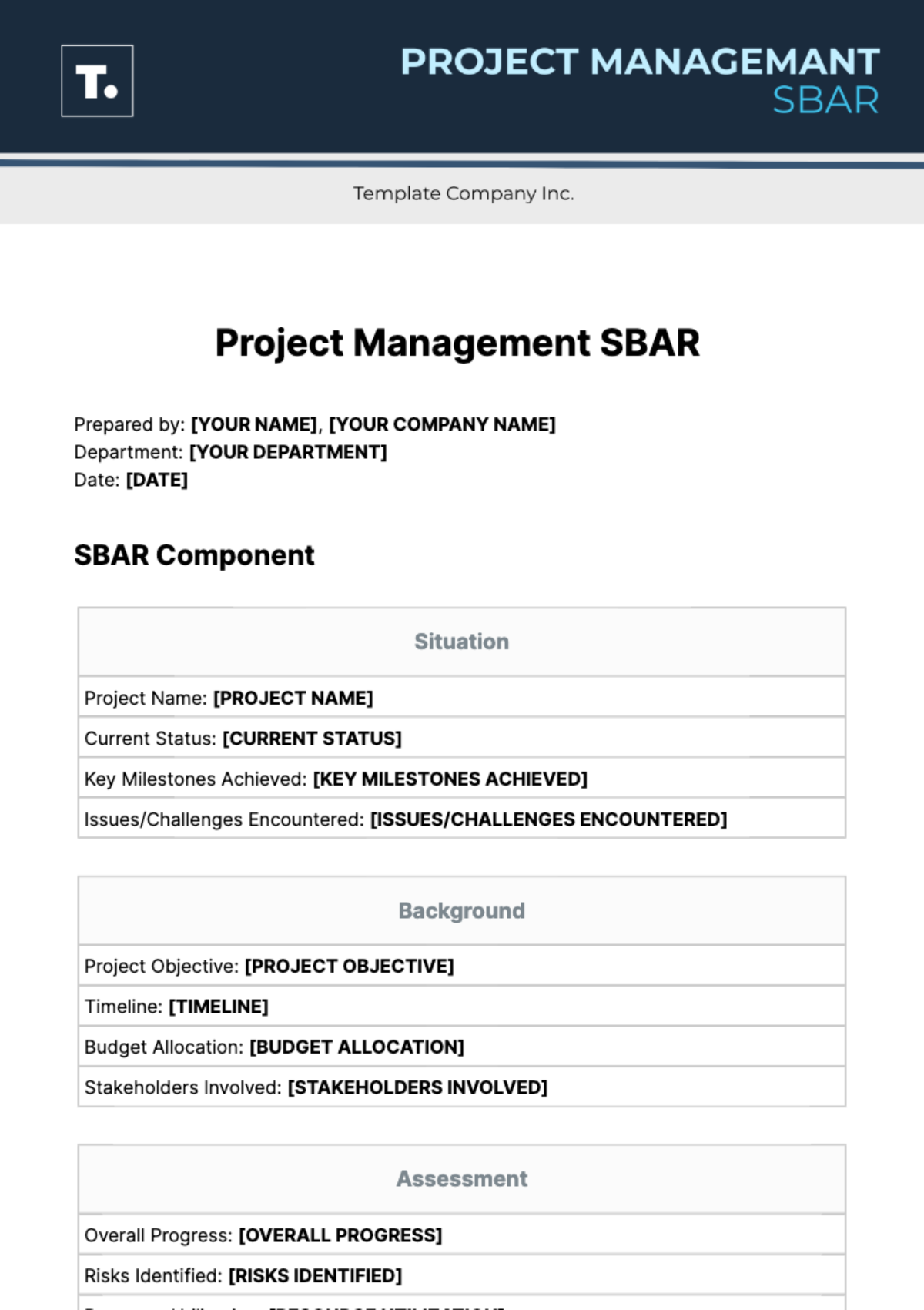Postpartum SBAR
Prepared by: Dr. [Your Name]
I. Situation
Patient: Emily Johnson
Age: 32 years
Date: July 15, 2050
Time: 11:30 AM
Emily Johnson, a 32-year-old female, is experiencing increased discomfort following a cesarean section performed two days ago. She reports persistent abdominal pain, difficulty in moving, and decreased appetite. Emily is concerned about the severity of her pain and its impact on her ability to care for her newborn.
II. Background
Emily was admitted to [Your Company Name] on July 13, 2050, for a planned cesarean delivery due to breech presentation. Her prenatal history was unremarkable with no significant complications noted. The cesarean section was completed without any intraoperative issues. Postoperatively, she was placed on a regimen of acetaminophen and ibuprofen for pain management.
Emily's medical history includes hypertension, managed with medication, and she has no known drug allergies. The baby's condition is stable, and breastfeeding has been initiated with no immediate concerns reported.
III. Assessment
Vital Signs:
Measurement | Value |
|---|---|
Temperature | 99.5°F (37.5°C) |
Heart Rate | 95 bpm |
Blood Pressure | 130/85 mmHg |
Respiratory Rate | 18 bpm |
Emily’s abdominal pain is rated 7 out of 10 on the pain scale, with pain primarily located at the incision site. She exhibits signs of fatigue and mild nausea. The incision site appears clean, dry, and intact without signs of infection. Emily's urine output is adequate, and bowel movements have been sluggish but present.
IV. Recommendation
I recommend the following actions to address Emily's postpartum concerns:
Pain Management: Increase the dosage of pain medication as per the standard protocol or consider alternative pain relief methods if current medication is insufficient.
Mobility Assistance: Arrange for physical therapy to assist with mobility exercises and improve her comfort in moving.
Nutritional Support: Consult with a dietitian to enhance her dietary intake and address decreased appetite.
Follow-Up: Schedule a follow-up appointment in 48 hours to reassess her condition and adjust care as necessary.
Patient Education: Provide Emily with information on post-cesarean recovery, including signs of infection and when to seek immediate medical attention.
